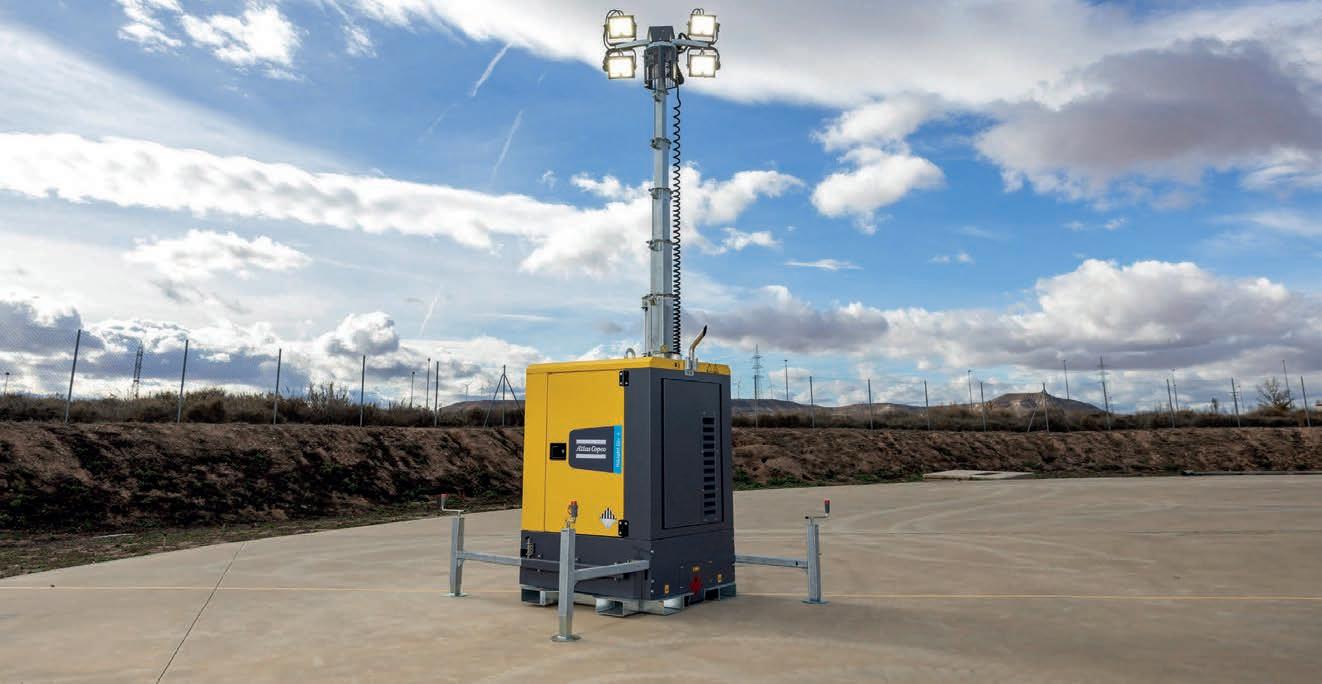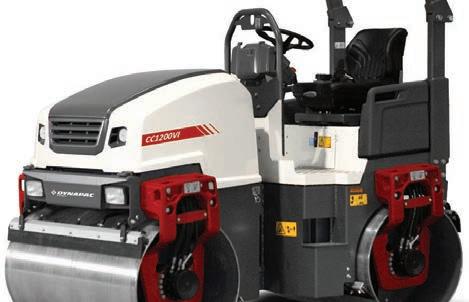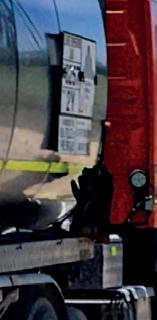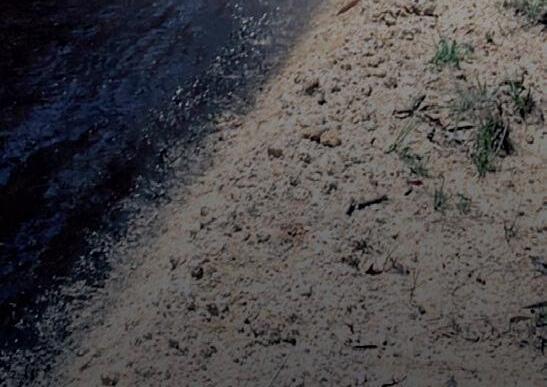Fully



Monumental sustainability milestones have been reached as part of works on the Cross River Rail project


MEASURE TO MANAGE
How infrastructure measurement and data capture are shaping the nation’s future HEADS UP
A sustainable philosophy and innovative products are protecting public infrastructure from climate related geohazards



POWERFEEDER MT 3000-2 OFFSET

FEEDING IN ALL SITUATIONS. The MT 3000-2 Offset is suitable for classic feeding, but can also feed mix to the side. This is because its conveyor can be pivoted to the left and right by 55°, enabling it to cover a vast range of applications, from “hot to hot” paving and hard-shoulder rehabilitation to backfilling trenches and filling the spaces between safety barriers. It can be cost-efficiently transported to the job site on a low-bed trailer. MT 3000-2 Offset – an uninterrupted, non-contacting supply of mix for more quality in road construction.
18 Fully circular Monumental sustainability milestones have been reached as part of works on the Cross River Rail Project.
22 Backing Australian made
We ask industry what needs to change to better cater for the growth sustainable materials?
27 Sustainable by name
For five decades, Reinforced Earth has grown its range of sustainable and practical solutions for the infrastructure sector.
31 Quantifying Australia’s transport sector
The importance and future of infrastructure measurement for Australia’s road, rail, ports and aviation networks.
35 Changing the industry
The Fill Up Today app is changing the
38 Inclusive employer
A look inside John Deere’s ethos and principles as an employer and how it values its employees.
41 Doing the heavy lifting

57 Tackling industry issues
How Premier Cranes & Rigging is helping to deliver the major West Gate Tunnel project in Melbourne.
45 A crucial component
Astec Industries’ SB-3000 Shuttle Buggy is being used as part of recent works on the Western Sydney Airport.
48 Lighting the way
Atlas CEA has been critical in lighting the way for road infrastructure projects across Australia.
51 Proof of excellence
Recent works by SAMI Bitumen Technologies have evaluated the use of its SAMIfloat high-float emulsion in a highvolume setting for the first time.
The Australian Flexible Pavement Association provides and explains its recommendations for government as part of its 2024 Federal pre-budget submission.
4 Editor’s letter
7 News
58 Contracts & Tenders
Above: Alex Fraser has proven the effectiveness of sustainable materials on the Cross River Rail project. Image: Alex Fraser.
Below: Australia’s largest infrastructure projects, such as the Western Sydney Airport and the West Gate Tunnel projects, all feature in this edition of Roads & Infrastructure Magazine. Image: Astec.


THE AUSTRALIAN BUREAU of Statistics’ latest data for the Waste Account, Australia, Experimental Estimates states that Australia generates 76 million tonnes of waste a year.
The construction industry is the second largest contributor, generating 12.7 million tonnes. Our industry is also responsible for the largest spend on wasterelated services at $2 billion, an increase of 35 per cent since 2016-17.
With these statistics set to increase, the importance placed on the industry to establish suitable infrastructure and innovations to establish a circular economy for recycling and reuse is significant.
But it’s not all doom and gloom, far from it.
While immediate action is required if the nation is to achieve its 80 per cent waste recovery rate target by 2030 set by the Federal Government, many companies across our sector have already taken a proactive approach. As we learn in the March edition of Roads & Infrastructure Magazine
Alex Fraser’s recent works with CPB Contractors on the Cross River Rail exemplifies what it means to deliver a major infrastructure project sustainability. As part of these works, Alex Fraser supplied over 25,000 tonnes of recycled construction materials into the project, helping to divert 25,196 tonnes of waste from landfill and reduce carbon emissions by 124,732 kilograms. Representatives from Alex Fraser and CPB explain how these milestones were achieved, as well as how sustainable alternatives have benefitted the project overall.
SAMI Bitumen Technologies’ SAMIfloat high-float emulsion is also providing a more sustainable option for road spray sealing. By reducing the amount of heating required compared to hot cutback binders, making it more environmentally friendly. This product forms part of SAMI Bitumen Technologies’ and COLAS’ commitment to developing and applying sustainable products.
Also in the March edition, the National Transport Research Organisation (NTRO) touches on the importance of infrastructure measurement and how its technology and services are helping to ensure that Australia has suitable and high-quality infrastructure to cater for future growth. Jeff Doyle, Executive Director Roads –NTRO explains why these services are so important, as well as what the future in this space has in store.
Happy reading!
Tom O’Keane Roads & Infrastructure Magazine
COO
Christine Clancy christine.clancy@primecreative.com.au
PUBLISHER
Sarah Baker sarah.baker@primecreative.com.au
MANAGING EDITOR
Mike Wheeler mike.wheeler@primecreative.com.au
EDITOR
Tom O’Keane tom.okeane@primecreative.com.au
JOURNALIST
Chris Edwards chris.edwards@primecreative.com.au
DESIGN PRODUCTION MANAGER
Michelle Weston michelle.weston@primecreative.com.au
ART DIRECTOR
Blake Storey
DESIGN
Bea Barthelson
BUSINESS DEVELOPMENT MANAGER
Brad Marshall brad.marshall@primecreative.com.au
CLIENT SUCCESS MANAGER
Salma Kennedy salma.kennedy@primecreative.com.au
HEAD OFFICE
Prime Creative Pty Ltd
379 Docklands Drive, Docklands VIC 3008 Australia
p: +61 3 9690 8766 enquiries@primecreative.com.au www.roadsonline.com.au
SUBSCRIPTIONS
+61 3 9690 8766 subscriptions@primecreative.com.au
Roads & Infrastructure Australia is available by subscription from the publisher. The rights of refusal are reserved by the publisher.
ARTICLES
All articles submitted for publication become the property of the publisher. The Editor reserves the right to adjust any article to conform with the magazine format.
COPYRIGHT
Roads & Infrastructure Australia is owned and published by Prime Creative Media. All material in Roads & Infrastructure Australia is copyright and no part may be reproduced or copied in any form or by any means (graphic, electronic or mechanical including information and retrieval systems) without the written permission of the publisher. The Editor welcomes contributions but reserves the right to accept or reject any material. While every effort has been made to ensure the accuracy of information, Prime Creative Media will not accept responsibility for errors or omissions or for any consequences arising from reliance on information published. The opinions expressed in Roads & Infrastructure Australia are not necessarily the opinions of, or endorsed by the publisher unless otherwise stated.


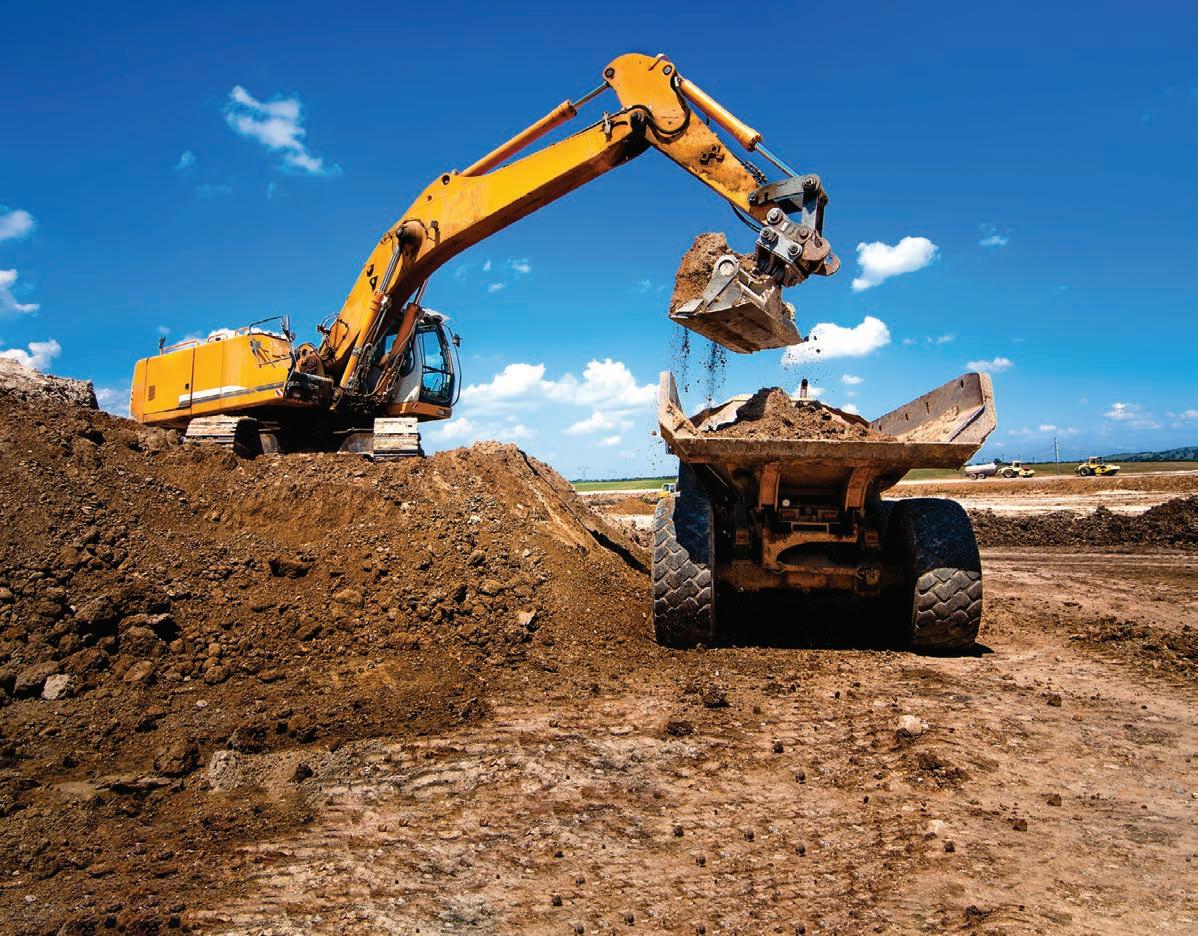
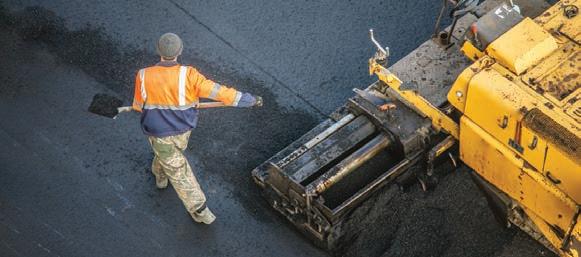

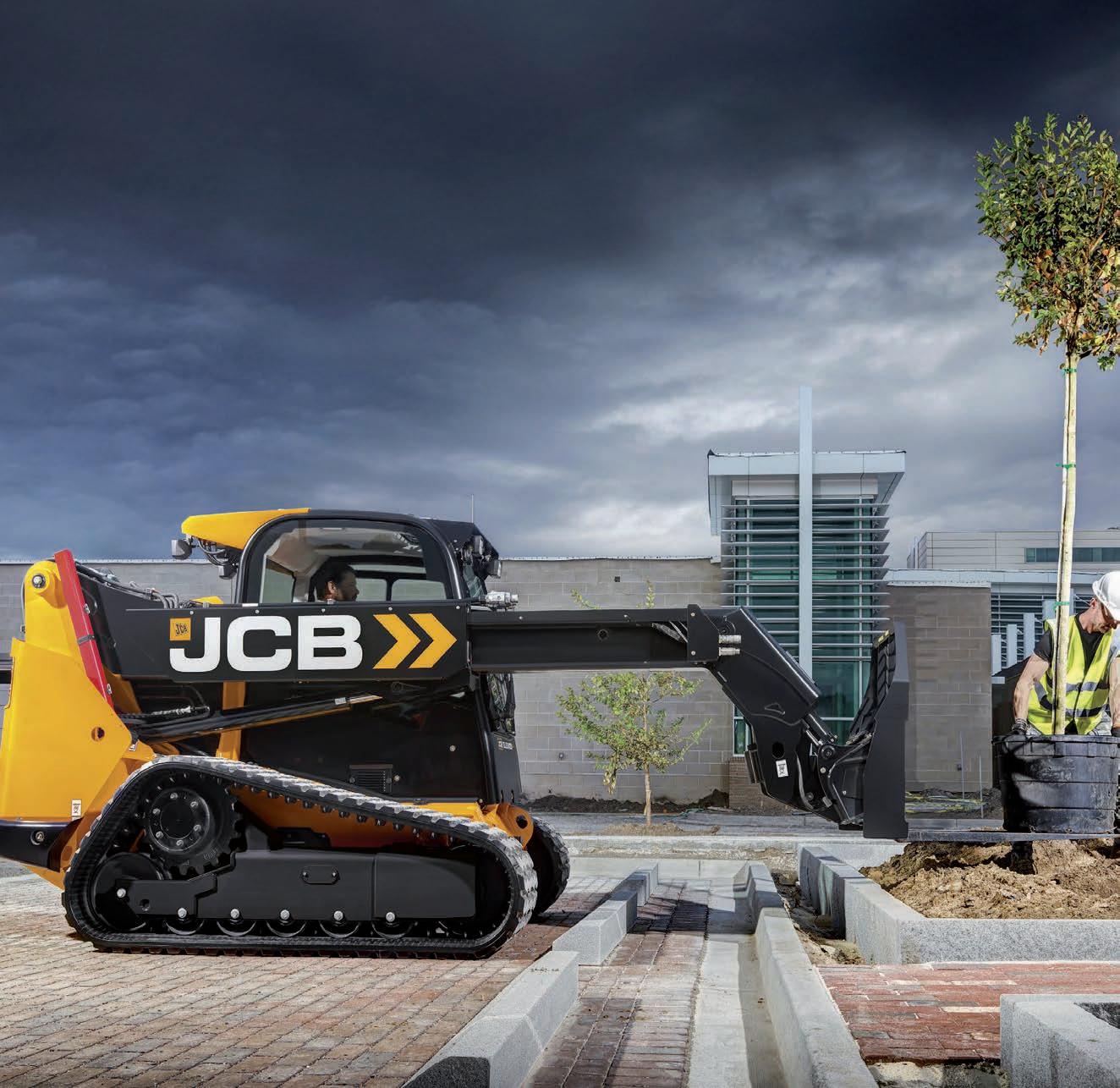
Introducing the first and only skid steer with a telescopic boom the JCB Teleskid; a truly unique, versatile skid steer with endless possibilities. Now you can lift higher, reach further, dig deeper.
This revolutionary product is designed to suit all types of job sites meeting the need of multiple machines wrapped nicely into one. Combining the strength and safety of our single side boom with side door entry and extendable boom JCB has increased the versatility of the SSL-CTL world.
To find out more contact your local JCB CEA dealer today.
Ph: 1300 522 232
www.jcbcea.com.au



The Federal Government has announced $78.8 million in funding to support the delivery of the initial Sydney to Newcastle high-speed rail business case in New South Wales.
Once complete, the project will deliver a new, high-speed rail network on Australia’s
east coast, transforming travel between cities and boosting economic development in regional areas.
The business case will include considerations such as the proposed alignment, station location, type of trains to be used and also the expected cost and

timeframe for construction.
The Federal Government allocated $500 million to the early stages of developing high-speed rail in its recent Federal Budget. This funding includes business case works.
The business case is expected to be delivered by the end of this year.
A new recovery and resilience package from the Federal and Queensland governments will provide $119.1 million to assist communities affected by the
floods across the northern and central regions of the state.
Of the $119.1 million, $100 million will be used as part of a Betterment Fund

to rebuild and increase the resiliency of infrastructure across impacted LGAs. The package will build upon previous assistance, and will support infrastructure reconstruction and long-term community, economic and environmental recovery.
The remaining funds will be divided between a $15 million Environment Recovery package for environmental investigations, the clean-up and recovery of waterways, biodiversity and invasive species management, and national park recovery.

A $2.2 million Human and Social Recovery Package will provide community recovery and resilience in Burke, Doomadgee and Carpentaria LGAs, while a $1.4 million Economic Recovery Package will include tourism recovery and resilience investments, and livestock and grazing land recovery.
Foundations have been laid and construction is now underway on the $2.1 billion M1 Pacific Motorway extension in New South Wales.
The M1 Pacific Motorway and Pacific Highway are critical links in the National Land Transport Network and among the busiest transport corridors in Australia.
It will feature a 15-kilometre extension of the motorway, removing five sets of traffic lights and cutting nine minutes from travel times during peak periods. It will also deliver a 2.6-kilometre viaduct over the Hunter River and floodplain, the Main North Rail Line, and the New England Highway.
These works aim to increase the flood immunity, traffic flow, accessibility and safety of the connection.
The Federal and State governments have contributed $1.68 billion and $420 million to the project respectively.
The extension is expected to open to the public in 2028.


A partnership between the University of Melbourne Faculty of Engineering, Porous Lane and the Victorian Government has incorporated old truck tyres into a concrete kerb replacement.
The initiative, which was supported through a Sustainability Victoria grant, aims to develop, trial and deliver Australia’s first recycled kerbs.
The recycled truck tyre alternative was trialled as part of works on the East Pakenham Station car park, with construction continuing on the new car park as well as a new station in East Pakenham.
One section of the 300 space car park has been made from a mixture of granulated waste tyres and crushed rock, which is bound together using an epoxy binder. Zero cement is required as part of this formula.


The performance of the kerb will be assessed and monitored, with a particular focus on evaluating the quality, strength, filtration of debris, drainage and impacts on local flora.
Further works are also underway to remove three level crossings in the region, with a new station also set to be delivered for central Pakenham.





Members of the public have been given the opportunity to have their say in the future of the Territory’s road safety action plan. Image: Northern Territory Government.

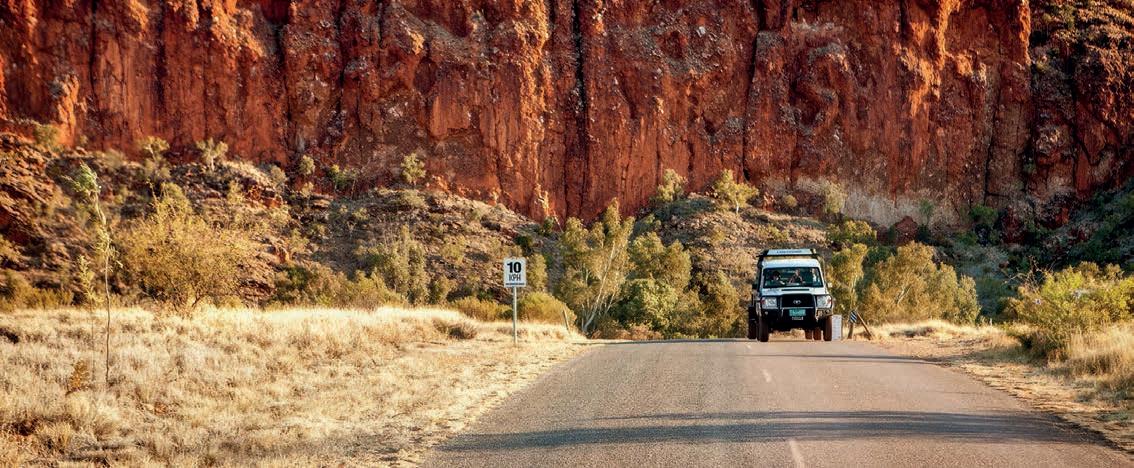
The Northern Territory Government is seeking public input into a newly released discussion paper, which will form part of the Territory’s Zero Road Safety Action Plan 2024-2028.
The 2024-2028 action plan follows on from the Northern Territory Towards Zero 2018-2022 Road Safety Action Plan, with the
new discussion paper including consultation with key road safety stakeholders, analysis of NT and national road trauma statistics, road safety research, and consideration of other Australian and international innovative approaches to road safety.
This includes input from NT Police, Fire and Emergency Services, St Johns
Ambulance, Kidsafe NT and regional and town councils.
The discussion paper sets out proposed actions across 10 priority areas to be addressed over the next five years, building on the Towards Zero Action Plan 2018-2022 and continuing to implement actions to reduce road trauma on Territory roads.
The construction of the new Arden Station in Melbourne is now complete, with testing set to get underway soon on what is the first of five new stations being delivered as part of the Metro Tunnel project.
The Metro Tunnel will create a new end-to-end rail line from Sunbury in the west to Cranbourne/Pakenham in the south east, with bigger and more modern trains, and five new stations.
Work is continuing on the other four underground stations – Parkville, State Library, Town Hall and Anzac – with Parkville expected to be the next station to be finished.
Arden Station’s completion was brought forward so it could become a test case for the remaining stations. Over the coming months, the project team will test station systems to make sure they work together.
This includes passenger information
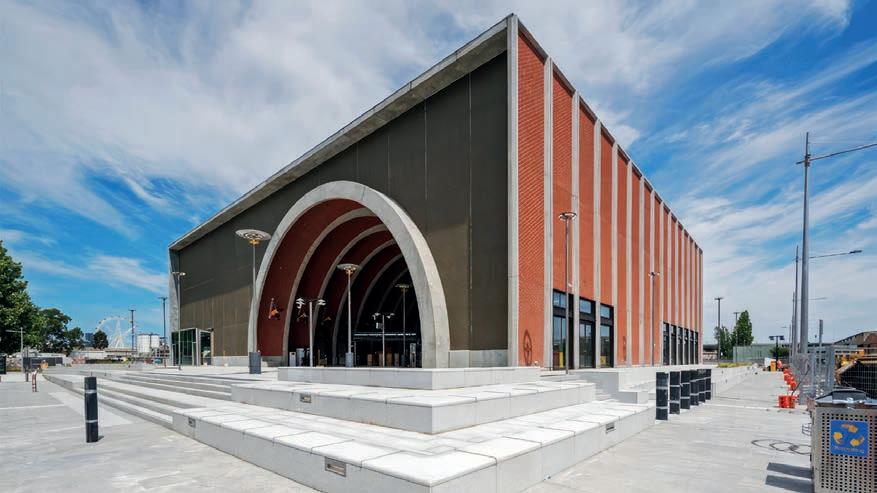
This marks the completion of the first Metro Tunnel station. Image: Victorian Government.
displays, platform screen doors and ventilation. They will troubleshoot issues and run software updates before rolling these systems out at the other stations.
The new Arden Station will open in 2025 as part of the Sunbury to
Cranbourne/Pakenham line. The Metro Tunnel is also expected to open in 2025. The project, and its new High-Capacity Metro Trains, will make room for an extra 121,000 peak-hour passengers every week, an increase of 45 per cent.










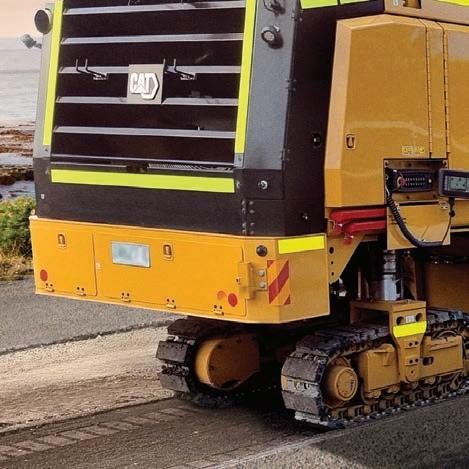





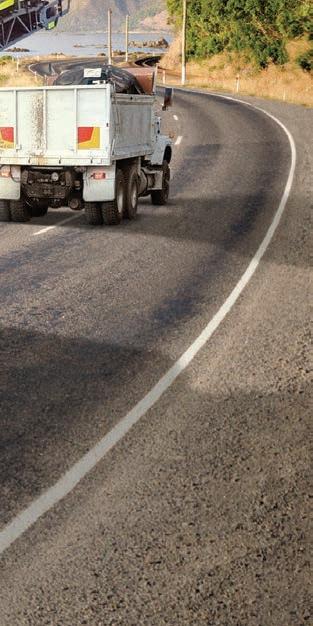
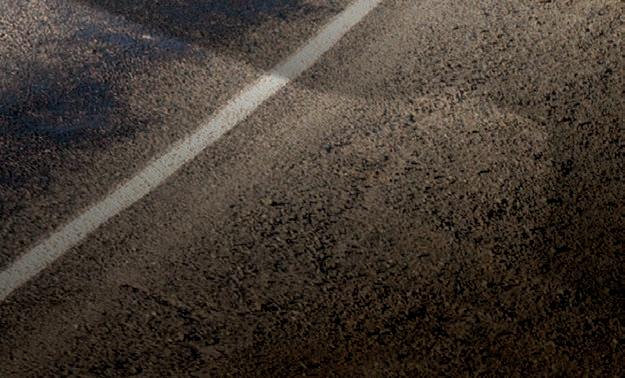





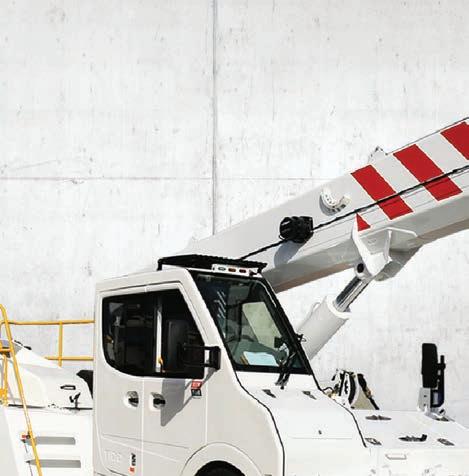


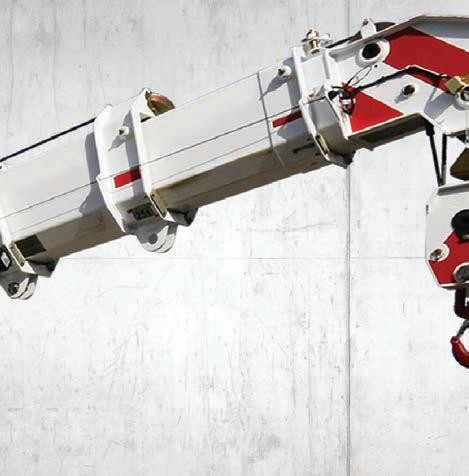



Australia’s safest pick and carry crane is now powered by the Cummins Euro 6 Engine, the highest emission control diesel engine available with significantly more horsepower. Including more powerful front suspension cylinders, lifting capacity has increased by an average of 17% when articulated or working on a side slope and in some cases by over 40% in lifting performance.
The latest Allison Transmission with retarder provides

superior downhill braking, delivering increased safety and control, lowered operational expenses, and reduced noise in urban areas.
The new TIDD PC28-3G is driven by our continuous focus on innovation and actively exceeding expectations for our customers.
Talk to us today to learn more about the TIDD PC28-3G Pick and Carry Crane.

CPB Contractors has completed its asphalting works on the Western Sydney International (Nancy-Bird Wilton) Airport’s runway as part of the Airside, Civil and Pavement Works project.
The company delivered 270 tonnes of material each hour for more than three months to complete the works.
The 3.7 kilometre runway combines two pavement types. Rigid concrete: Used at both runway ends (approximately 250 meters each) for enhanced stability and load-bearing capacity. As well as flexible asphalt: Covering the remaining runway length. It offers superior flexibility and


durability to withstand the conditions that come with aircraft operations.
Around 220 kilometres of aeronautical ground lighting cabling has also been installed under the runway as part of wider works.
CPB Contractors Project Director Christian
Byrne said delivery prioritised efficiency.
“Having an asphalt batch plant on site increased efficiency and significantly reduced truck movements on local roads. There were approximately 15 trucks used on site involved in the process of asphalt placement,” Byrne said.


The New South Wales Government has released draft plans for the new $309 million Penrith Stadium redevelopment. The redevelopment will include a new western grandstand and developments to the existing eastern grandstand. These works will increase capacity to 25,000.
New player facilities and change rooms also aim to increase female representation across multiple sporting codes.
The designs for the stadium upgrades were developed in consultation with the community and will be made
available for public comment in the coming months.
To facilitate the redevelopment, the stadium is expected to close after the 2024 NRL season, and re-open in 2026. Construction timeframes are subject to planning and procurement processes.





























Boral is set to deliver and lay 280 kilotonnes of asphalt for the $2.2 billion Coffs Harbour Bypass in New South Wales.
The 14-kilometre Coffs Harbour Bypass seeks to improve connectivity, road transport efficiency and safety for motorists. When complete, the bypass is expected to reduce travel times by 12 minutes by enabling motorists to bypass 12 sets of traffic lights.
On top of constructing 12 kilometres of new road, the project scope also includes the construction of three tunnels and around two kilometres of upgraded highway.
Boral will supply flexible pavement (EME asphalt), with the company set to start the majority of asphalt work half-way through this year. EME asphalt provides multiple layers of material which allows for traffic loads and durability, also providing five to ten times the lifespan of regular asphalt.
Flexible pavement has been preferred over conventional materials for works on the Coffs Harbour Bypass. Image: New South Wales Government.


The project is expected to open to traffic in late 2026 and will be complete in 2027.
Construction has wrapped up on the new Selgar Avenue link road, one of the first of a number of construction projects that form part of the $15.4 billion Torrens to Darlington motorway in South Australia.
The Torrens to Darlington (T2D) project is the largest road infrastructure project in South Australia’s history and when complete in 2030, will provide a 78-kilometre non-stop, traffic light-free North-South Corridor between Gawler and Old Noarlunga.
Using a combination of tunnels, lowered and ground-level motorways, as well as overpasses and underpasses at key intersections, T2D will bypass 21 sets of traffic lights between the River Torrens and Darlington. When complete, around 60 per cent of the T2D Project will be comprised of underground tunnels.
Stage One (Southern Tunnel) between Anzac Highway and Darlington will including more than four kilometres
of tunnel. Stage Two (Airport Link and Northern Tunnel) between the River Torrens and Anzac Highway will include a second tunnel and at-surface motorway. Additional works on the T2D Motorway are underway, including completing the nearby Tonsley East Substation, which will supply electricity to the tunnelboring machines (TBMs) and then to
the two parallel four-kilometre-long southern tunnels once they are completed in 2030.
Main construction for the Selgar Avenue link road was delivered by Bardavcol.
The T2D project is being jointly funded by the Federal and South Australian governments on a 50:50 basis.
The new road will provide greater efficiency and safety for motorists, as well as local businesses. Image: South Australian Government.

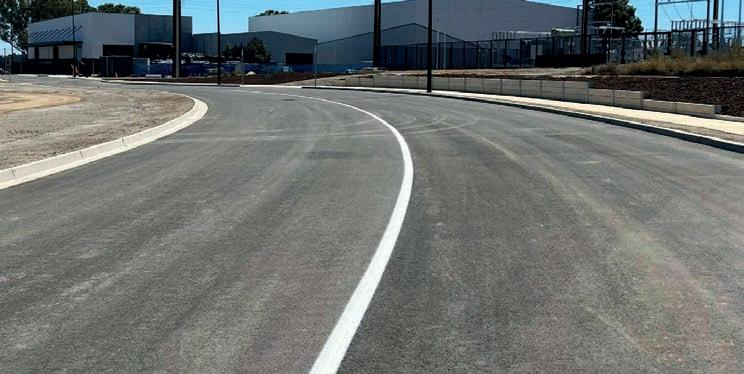
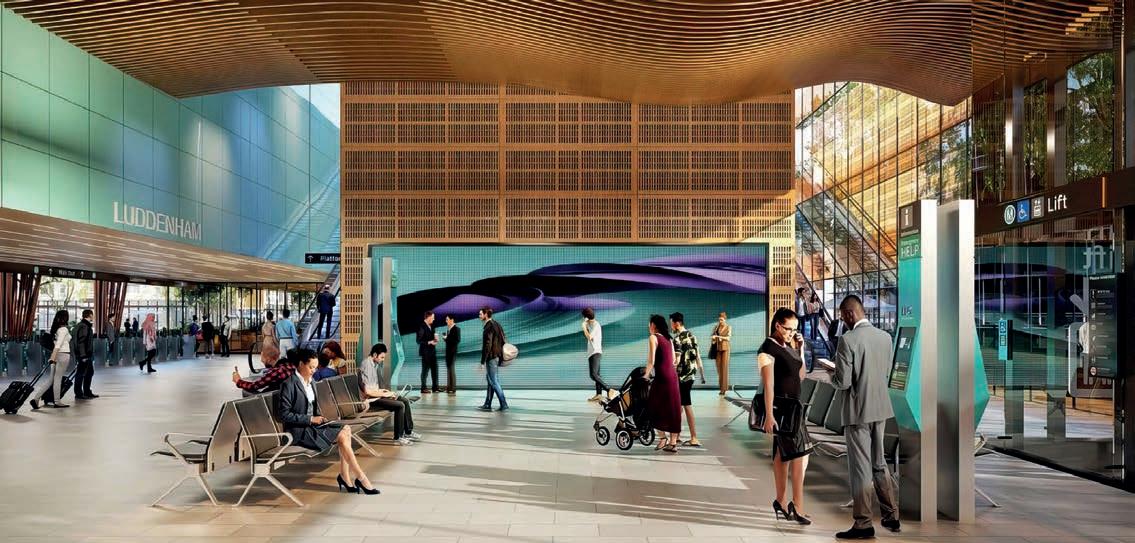


Works on the Western Sydney Airport metro line are powering ahead, with one kilometre worth of elevated viaduct now built for the 23-kilometre metro line.
In total, 3.5 kilometres of elevated viaduct will be installed during the construction phase. Three viaduct structures make up the combined
3.5-kilometre section of the alignment that will take metro services over key locations. More than 1100 segments will be manufactured on the NSW Central Coast for the viaduct structures, which will be supported by 84 piers located every 28 to 40 metres.
This comes as works continue on the
new Luddenham Station, one of six new stations for the metro railway line that will connect people visiting the new international airport. Construction will begin on the Luddenham Station next month, including the concrete pour.
The new Luddenham Station will be the only station situated on a viaduct.
The 145-metre bridge span is now complete over the rail line for the new Beaconsfield Parade bridge in Glenrowan, Victoria.
The construction of the new Beaconsfield Parade bridge will provide enough

clearance under the bridge to allow double-stacked freight trains to pass safely.
Previously, there wasn’t enough clearance, which will be fixed with the new bridge’s higher design.

This project also forms part of works at 12 sites across Victoria, delivering suitable infrastructure to enable double-stacked freight trains to transport everyday products safer and faster.
McConnell Dowell helped to deliver the project.
Work on the bridge began in February 2023.
In total, 51 concrete beams are incorporated into the bridge – 30 for the vehicle section and 21 beams for the pedestrian section of the bridge.
More than 1200m³ of concrete has been used to construct the bridge.
Peter Lacki, McConnell Dowell Senior Project Engineer said the project would help to increase the reliability of freight travel.
“With the final beams in place we will work on completing the barrier installation, connecting the approach ramps and constructing the road base,” he said.









It takes a different kind of brain behind the brawn. Fired up like a turbo diesel. Gears constantly churning. Hardwired beneath hard hats to solve problems, or avoid them altogether. With you and your crew at the helm, and Deere at your back. The workarounds, ideas and innovations that move earth, and your business, forward. Because that’s what it takes to win in the dirt. And that’s what it means to be Never Idle.







Alex Fraser has supplied more than 25,000 tonnes of recycled construction materials into the Cross River Rail project. Image: UNITY Alliance – Cross River Rail.

ALEX FRASER’S SUPPLY TO THE CROSS RIVER RAIL, ONE OF THE LARGEST INFRASTRUCTURE PROJECTS IN AUSTRALIA’S HISTORY, IS SETTING A NEW STANDARD AND EXEMPLIFYING THE POWER OF RECYCLED MATERIALS.
Transportation in and out of Brisbane can come with its challenges.
With limited transport options, as well as exponential population growth forecast for the region, the proposition of catching public transport was set to become even more challenging. Until the State Government stepped in.
After identifying the potential strain that population growth could have on current transport infrastructure, the Queensland Government sought to expand Brisbane’s public transport network. And thus, the Cross River Rail project was born.
Brisbane’s transformational Cross River Rail project will deliver commuters a new 10.2-kilometre rail line featuring 5.9 kilometres of twin tunnels under the Brisbane River and CBD.
The project includes the construction of four new inner city underground stations as well as new facilities at Mayne and Clapham Yards, rebuilds of eight above ground stations
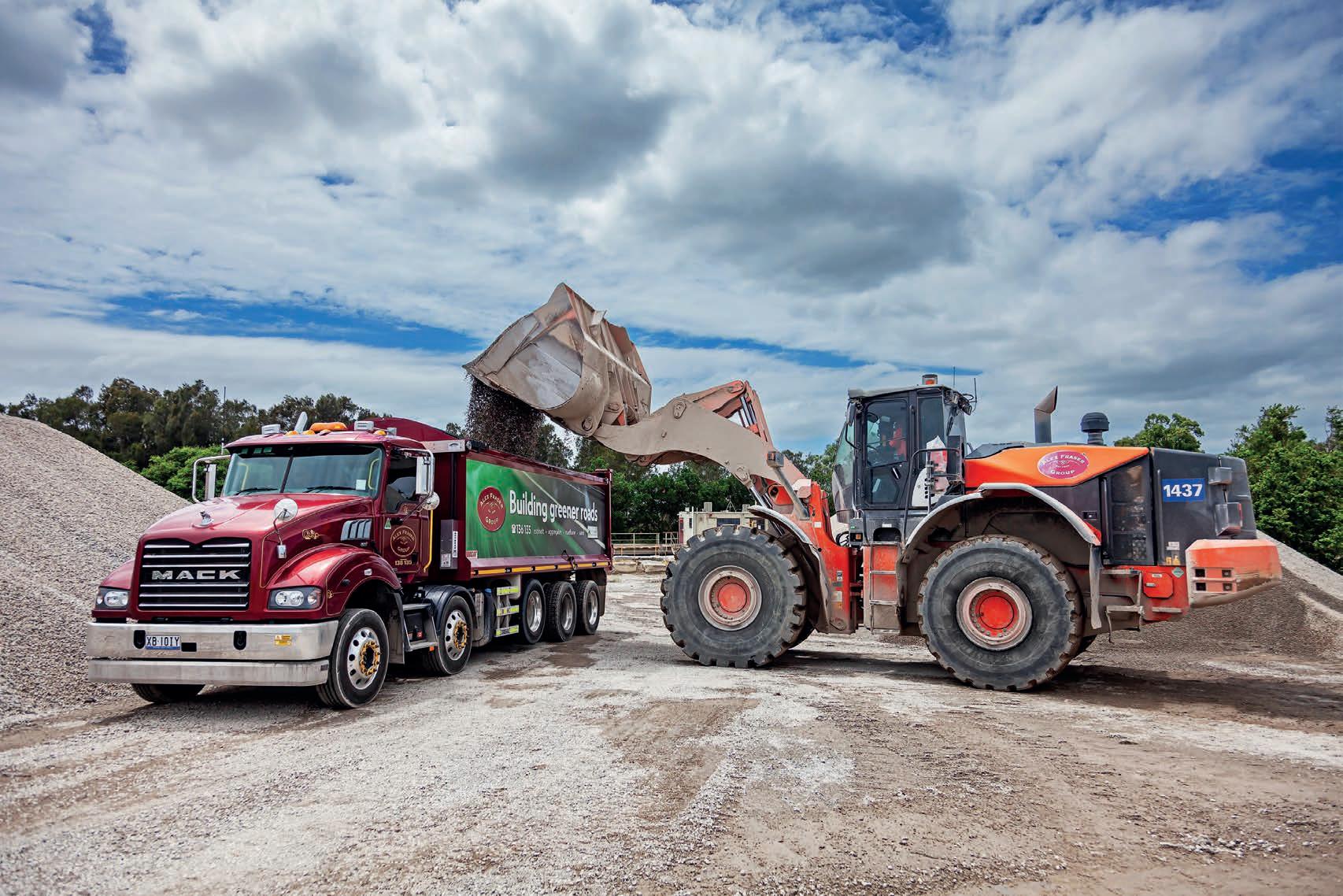
at Exhibition (RNA) and the Beenleigh line between Dutton Park and Salisbury, and other corridor widening and upgrade works.
This crossing will enable increased frequency of trains across South-East Queensland by enabling the rail network to increase its capacity to run as many as 24 trains per hour in each direction. Additional services will help to reduce traffic congestion and increase network reliability.
The project will also help to increase the infrastructure capacity of the region in the leadup to the 2032 Brisbane Olympic and Paralympic Games, which are expected to deliver $8.1 billion (per Brisbane City Council) worth of benefits to the region, including an economic boost and social improvements.
The Rail, Integration and Systems (RIS) works package is being delivered by the UNITY Alliance. This Alliance brings together CPB Contractors, UGL, AECOM, Jacobs, Queensland Rail (CPB) and the Cross River Rail Delivery Authority and their suballiance partners.
Throughout the early stages of the Cross


UNITY team an ambitious target.
“There can be some apprehension when considering the use of recycled materials in place of traditional resources, so it was important to demonstrate the quality, reliability, and value of recycled content,” Hedges says.

Image: Alex Fraser.
diverted from landfill, are manufactured back into high-quality, sustainable products used to build new infrastructure, like roads, bridges, pavements, and ports.
The company supplies sustainable construction materials to major infrastructure projects across Australia, including the Mordialloc Freeway, Sunbury Road Upgrade and Pound Road West Upgrade in Victoria, exemplifying its ability to also collaborate with major contractors and asset owners to achieve sustainable outcomes.
For the Cross River Rail Project, the UNITY Alliance worked with Alex Fraser to develop the composition of a new 20-millimetre aggregate, compliant to Department of Transport and Main Roads (TMR) specifications.
Hedges says the use of these sustainable construction materials was encouraged by the Alliance.
“I’m happy to say we have successfully supported our teams to make this transition to more sustainable product use through trials, toolbox talks and many evidence-based conversations,” he says.
“It’s taken two years or so, but the team at UNITY are now adopting a range of circular construction materials, with most of our teams now using volumes of recycled aggregates.”
Hedges adds that there have been many learnings along the way.
“We have worked in a very collaborative way with Alex Fraser’s sales team who responded positively to our feedback and made changes when required. These circular construction materials have become our goto supply for a range of applications,” he says.
“It was great to work with Nicole Bates and the sales and production teams at Alex

Fraser, who were so open and responsive. They modified a few blends and developed a new recycled product that was ideal for use on the Cross River Rail project and compliant with TMR and QR specifications.
“It was a win for UNITY, because it enabled us to improve our project’s sustainability outcomes through the use of circular products, and a win for Alex Fraser who expanded the reach of their recycled construction materials into Queensland’s major rail projects.”
In addition to the use of recycled aggregates and roadbase, Hedges has successfully introduced the recycled glass sand as a bedding material on the project.
“We’ve undertaken several trials and already used over 2000 tonnes of recycled glass sand in the project, mostly as pipe embedment and a compliant alternative to bedding sand. Our future scope of works will provide us with further opportunities to use recycled glass sand.”
Alex Fraser Sales Manager Nicole Bates recognises Hedges as a driving force behind infrastructure sustainability in southeast Queensland.
“Glenn, as UNITY’s Sustainability Manager, has been instrumental in building the working relationship between Alex Fraser, UNITY Alliance and their subcontractors. His passion for sustainability and his proactive approach to enabling important change, has been instrumental to improving sustainable outcomes on this major project – setting the benchmark for the future works,” she says.
Bates acknowledges that there can be logistical challenges with projects of this magnitude.
“We are supplying to around a dozen
delivery points for this project, around the CBD, in high density zones, often with limited and tight access. We have depth within our fleet to ensure we can allocate the right truck to each delivery, whether it’s a 10-wheeler, a tandem, or a truck and dog,” she says.
Alex Fraser Recycling GM, Murray Butterworth, explains that Queensland has a history of utilising recycled materials in its major road projects, with Alex Fraser supplying circular materials to projects like the Bruce Highway, Gateway Upgrade North and the CLEM 7 (M7 Clem Jones Tunnel).
“We have demonstrated the use of these
project’s construction and demolition waste through resource recovery and recycling at its Nudgee and Archerfield recycling facilities.
“We have already recovered and recycled more than 6000 tonnes of mixed concrete, asphalt and brick from early works on the Cross River Rail project, to go back into the very same project,” Bates says. “It’s a perfect example of Queensland’s circular economy in action.”
Andrew Skele, Environment and Approvals Manager from the Cross River Rail Delivery Authority says the Cross River Rail project is setting new standards for major infrastructure
“WE HAVE ALREADY RECOVERED AND RECYCLED MORE THAN 6000 TONNES OF MIXED CONCRETE, ASPHALT AND BRICK FROM EARLY WORKS ON THE CROSS RIVER RAIL PROJECT, TO GO BACK INTO THE VERY SAME PROJECT.”
circular materials on a wide range of major rail projects in other cities, so it’s good to see the successful use of recycled materials in a such a large-scale rail project in South-East Queensland,” he says. “In 2023 alone, Alex Fraser supplied more than 680,000 tonnes of recycled materials into major projects in Victoria, with hundreds of thousands of tonnes directed to Level Crossing Removal rail projects.”
To date, Alex Fraser has supplied more than 25,000 tonnes of recycled construction materials to the Cross River Rail project, the equivalent of 1,328,500 recycled glass bottles. By using recycled construction materials on the project, 25,196 tonnes of waste has been diverted from landfill.
Alex Fraser partners with Cross River Rail to enable the responsible management of the
delivery, with innovative and best practice designs and construction.
“Our project’s legacy will go beyond the transformational benefits to the public transport network, to also include improved construction, sustainability, and training outcomes,” he says.
“UNITY, our delivery Alliance partners for the Rail Integration and Systems works package, have worked closely with both the Cross River Rail Delivery Authority and our partners at Queensland Rail to secure these outcomes. They have collaborated with the supply chain, trialled, and subsequently adopted several fit-for-purpose recycled materials which provide value for money, meet stringent engineering standards, and often provide extra safety and productivity benefits.”








THIS MONTH, WE ASKED THE INDUSTRY’S DECISION-MAKERS, ‘WHAT NEEDS TO CHANGE TO BETTER CATER FOR THE GROWTH AND DEVELOPMENT OF
STEVE MORRISS, HEAD OF CIRCULAR ECONOMY – CLOSE THE LOOP Government mandating of targets for the use of sustainable construction materials is the fastest way to increase uptake. Common barriers to market entry for sustainable construction materials erode quickly when there is a risk of not winning new business. It would help if standards and specifications were performance based as opposed to prescriptive. If a new material performs the same or better than a traditional material, it should not be blocked by prescriptive specifications because that’s the way we’ve always done it. Change is happening now, thank you to all those in government and industry working hard to promote the use of sustainable construction materials. Keep up the

Image: Close the Loop.


SARAH BACHMANN, CEO – NATIONAL PRECAST


Challenging traditional construction methods to increasingly utilise off-site manufactured products in construction offers the biggest opportunity for productivity improvement in recent times. It’s a challenge that government must lead as it is vital to ensuring the development of sustainable construction inputs and products. Sites become safer using offsite-manufactured products as most work is moved into purpose-built factories with a controlled environment. Global sustainability can improve by incorporating local materials into products, transport emissions from imports go down, durability of structures improves from higher quality products that are produced in a proven manufacturing quality control environment, and local manufacturing supports local economies. Choosing locally sourced offsite manufactured products like precast concrete manufactured by National Precast’s Master Precasters fosters technological advancements in the industry for a more sustainable construction industry.

Image: National Precast.
Several opportunities exist in the municipal works industry to foster the use of sustainable products. They include an increased commitment to research to enable the development of cost-effective and operationally feasible new materials and service approaches. Once developed, industry associations have a vital role in facilitating collaboration between researchers, manufacturers, and work professionals to share this knowledge and accelerate using these materials in operational environments. Local government has an equally important role in incorporating sustainable materials and practices into capital works projects, creating a demand to stimulate the recycled materials market.
Image: Municipal Works Australia.

Celebrating 100 years of bitumen emulsion





There are two main issues at play here with legislation and specifications as the biggest barrier by far. We discovered through our federally funded CRC-P project and as industry chair, each state has its own definitions on what was resource and waste. This means sustainable products produced and approved in one state, don;t necessarily receive acceptance elsewhere. Generally, we end up testing and duplicating validated research, which is an additional cost. This whole process is often too hard and kills the innovation and development. The second is people! We are risk adverse. Even when all the research and science is presented, most will always default back to the tried-andtrue methodologies, especially if unsure or if they have an opinion. This attitude needs side-lining, and the facts and science presented accepted not argued. If this adds up, take a risk! If unsure, seek proper advice from a subject matter expert and not those from a different field.
Image: AfPA.



Current specifications often limit innovation and the take up sustainable construction materials, as they demand strict adherence to pavement mixes and historical norms that conflict with the nature of recycled products. To encourage broader use of sustainable materials, a change of mindset is necessary. Instead of procurement decisions based on rigid conformity to specifications and price alone. There is an opportunity to focus the assessment of materials based on their performance characteristics including CO2 footprint and other non-price factors. This approach if applied with a consistent methodology will accelerate the integration of sustainable and recycled products in construction projects.
Image: Downer.


If you or someone at your organisation is an industry leader and would like to be a part of this monthly column in 2023, please get in touch with Editor, Tom O’Keane: tom.okeane@primecreative.com.au

www.roadsonline.com.au/subscribe

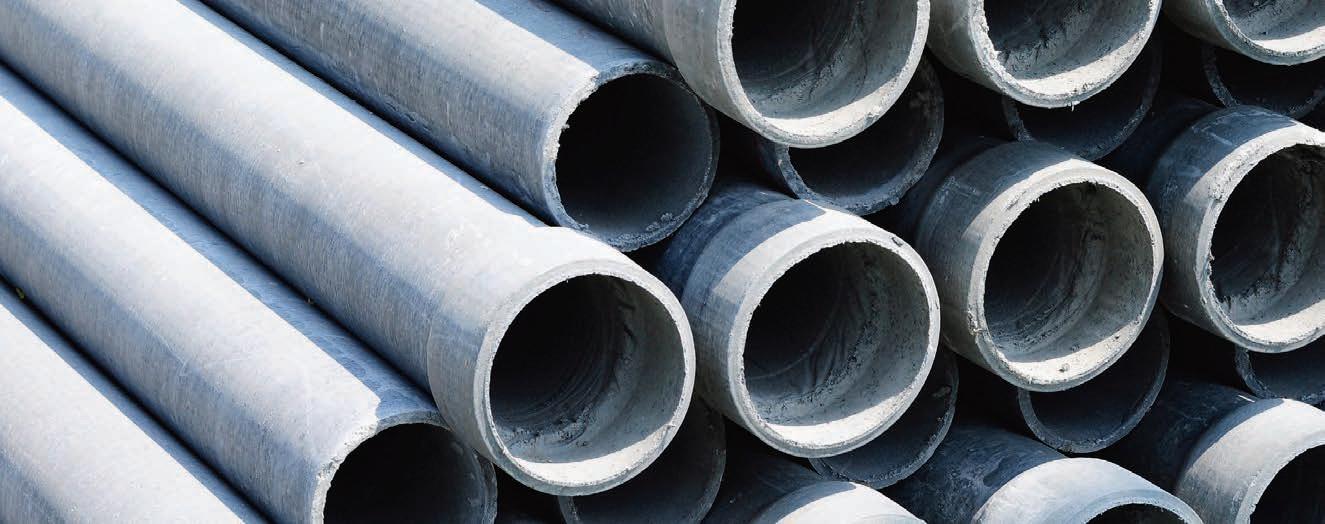














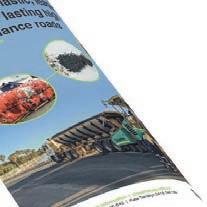











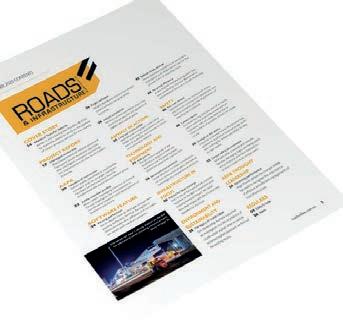






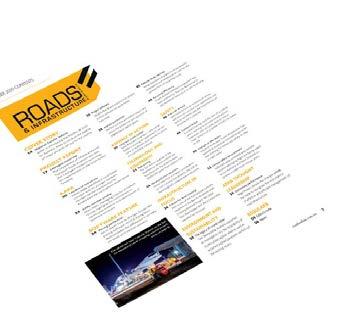
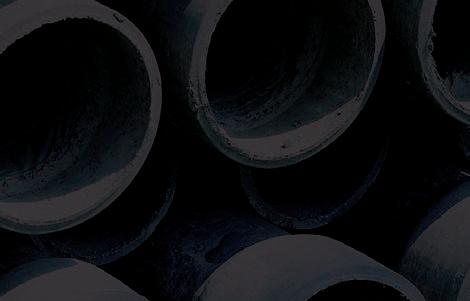
Roads & Infrastructure Australia is a leading news resource for the Australian roads, civil engineering, and infrastructure sectors. Catering to Australia’s civil and road construction industry, Roads & Infrastructure Australia is a key source for industry decisionmakers, contractors, civil engineers and individuals in local and state government sectors and the private sector looking to keep up to date with important issues, developments, projects and innovations shaping the industry today.
www.roadsonline.com.au




McConnell Dowell has announced a leadership transition that will see Mario Russo General Manager South Australia and Western Australia, succeed Jim Frith as Managing Director of the company’s Australian Business Unit. Russo joined McConnell Dowell in 2008 with the Group’s acquisition of Built Environs. He has supported McConnell Dowell’s Vision 2025 and Horizon 2030 strategic plans as a Tier One contractor in South Australia through the delivery of high-quality projects on time and within budget. Russo has also played a key role in steering McConnell Dowell’s re-entry into the Western Australian market and has also helped to create new partnerships and relationships between the company’s SA infrastructure and vertical building businesses, creating new internal opportunities. Frith has been a part of McConnell Dowell for more than three decades and has led the Australian team within the business since 2016. This leadership change takes place with immediate effect.

Image Courtesy of McConnell Dowell.
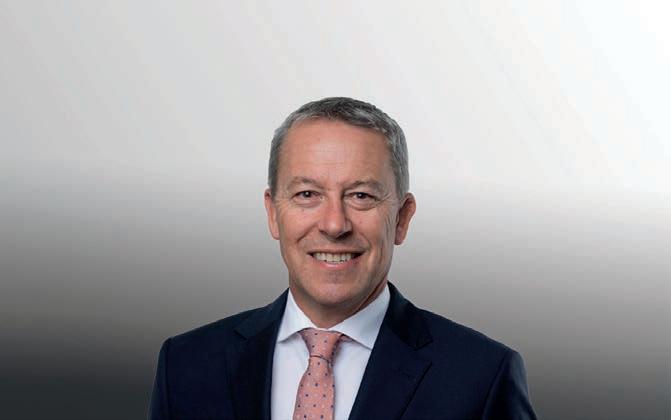
Inland Rail has announced the appointment of its new CEO, with the ARTC and WSA also announcing new appointments. Nick Miller (pictured left) joins Inland Rail following a five-year tenure as CEO of Adbri, an Australian construction materials manufacturing company and his former role as Managing Director of Fulton Hogan. This also follows additional appointments to Australia’s national rail and aviation projects. Wayne Johnson has been appointed as the new Chief Executive Officer and Managing Director of the Australian Rail Track Corporation (ARTC). These appointments address recommendations of Dr Kerry Schott AO’s report, The Delivery of Inland Rail: an Independent Review, which the Federal Government continues to implement. Timothy Eddy, Donna-Maree Vinci and Ken Kanofski have been appointed as Non-Executive Directors of WSA Co Limited (WSA). The WSA Board will complement and enhance the broad range of the Board’s expertise and skills required to deliver Australia’s newest airport, which is on track to start operations by late 2026. Infrastructure, Transport, Regional Development and Local Government Minister Catherine King said the new appointments will help to strengthen Australia’s national rail and aviation projects.
Image Courtesy of Inland Rail.





CPB Contractors Bid Manager Emma McCaughey has been appointed as 2024 President of the National Association of Women in Construction (NAWIC) Queensland. NAWIC association members from across Queensland voted McCaughey into the position, which formally recognises her outstanding work promoting women in the construction industry. McCaughey is a Civil Engineer and Registered Professional Engineer of Queensland. She has been with CPB Contractors for more than 15 years and over this time worked in senior project-based roles to deliver projects across the roads, aviation and resources infrastructure sectors. A champion for a diverse and inclusive construction industry, McCaughey was the founder of CPB Contractors’ Queensland Gender Equality Action Plan Taskforce and is a member of CPB Contractors’ Women’s Advisory Board.
Image courtesy of CPB Contractors.

Timothy Parker has been announced as the inaugural Chief Executive Officer of the High Speed Rail Authority (HSRA), following a merit based selection process. Parker has considerable leadership and project experience in delivering complex infrastructure projects to drive the development of high-speed rail in Australia. Parker has over 30 years of experience in developing, procuring and delivering significant infrastructure projects including as the Head of Project for Sydney Metro since 2018, as well as having complex infrastructure experience working in Hong Kong and the United Kingdom. HSRA is tasked with advising on, planning, developing and overseeing the construction and operation of the transformational High Speed Rail network.
Image courtesy of LinkedIn/Tim Parker.






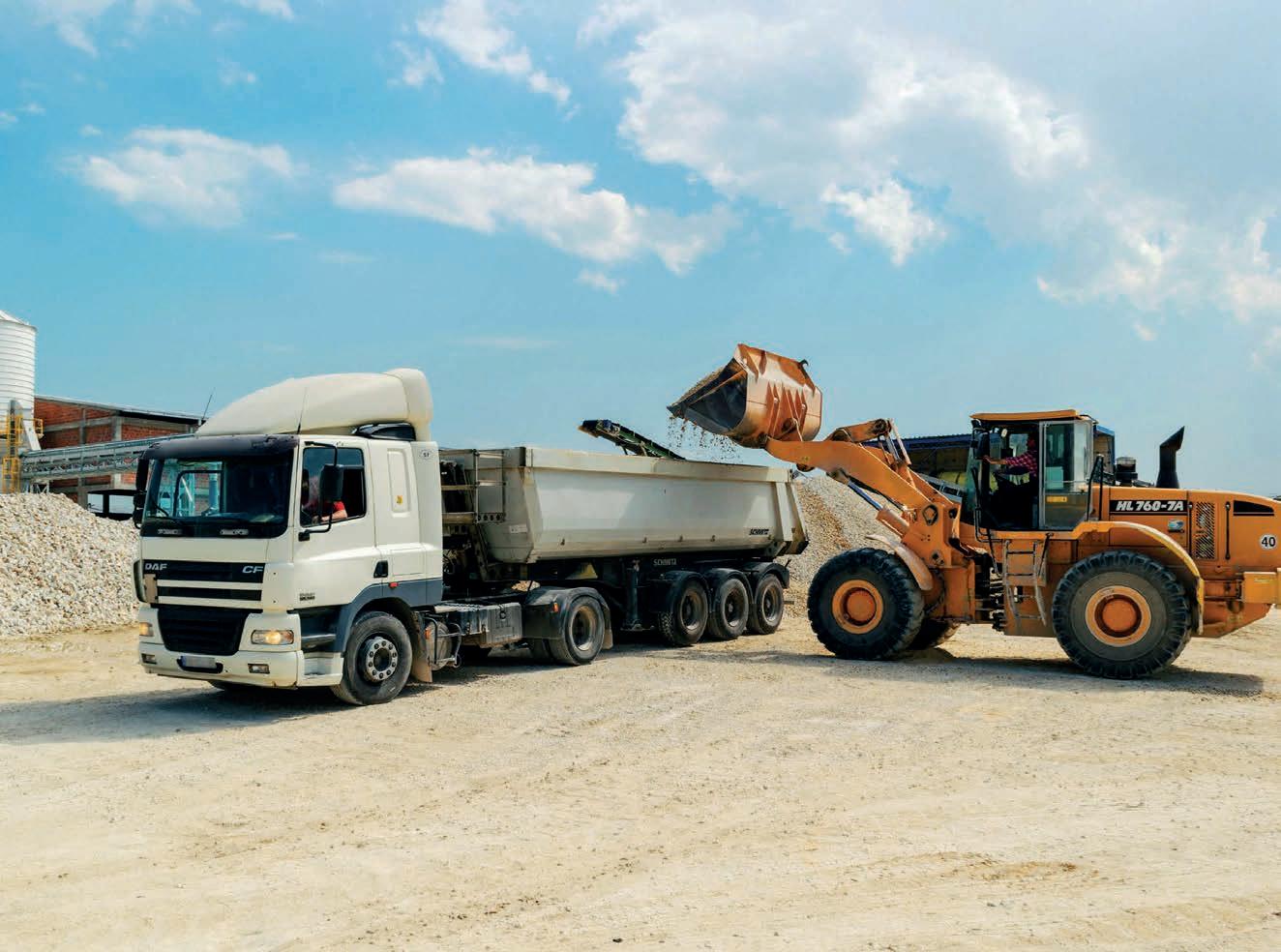













FOR FIVE DECADES, REINFORCED EARTH HAS GROWN ITS RANGE OF SUSTAINABLE, PRACTICAL SOLUTIONS FOR THE INFRASTRUCTURE SECTOR. ROADS & INFRASTRUCTURE MAGAZINE HEARS FROM TWO LEADERS WITHIN THE BUSINESS, AS WELL AS ENGINEERING CONSULTANT AURECON TO LEARN MORE.
Backed by 50 years’ worth of experience in tailoring solutions for Australia and New Zealand’s infrastructure sectors, Reinforced Earth’s innovation has at times led to the development of products that are now used as standard around the world.
These technological breakthroughs have been a consistent theme throughout these five decades, so has the need cater for the evolving nature of infrastructure globally.
Now Reinforced Earth is looking to further improve its capabilities to tackle a universal issue, the impacts caused by climate change around the world.
Riccardo Musella, Managing Director –Reinforced Earth, says sustainability has always been an important consideration for the company.
“Funnily enough the historical name of the company has always been Reinforced Earth, then we used to have a slogan
underneath that said, ‘sustainable technology’. That was 20 to 30 years ago, and that ethos continues today,” he says.
“It’s the reason why every piece of technology that we design and supply tends to minimise the use of materials overall by using materials that’re already on site, resulting in a CO2 emission reduction overall.
“On top of that, we are a multinational corporation, which is listed on the stock exchange in France. We have our own goals and targets that we need to comply with. We also have a responsibility to fulfill these goals due to our obligation to our shareholders. Sustainability is right at the top in terms of our priorities.”
In addition to these products helping Reinforced Earth’s customers to achieve their own sustainability goals, Musella says being sustainable has also benefitted the company’s own bottom line.
“If you minimise the amount of material that you use, you’re helping your own company from a cost perspective. It’s not always true that being sustainable is more expensive,” he says.
As part of its sustainability journey,
Reinforced Earth invested in expert consultation to develop a long-term strategy to reduce the company’s environmental impact. This led to early discussions with Aurecon, a global specialist in advisory, design, delivery and asset management.
Jenni Philippe, Associate, Circular Economy – Aurecon, worked closely with Reinforced Earth to identify potential areas of improvement. She says two points of interest were the company’s range of steel and concrete products – materials that can emit considerable volumes of carbon dioxide during production and application.
“We suggested an approach that enabled them to first understand the baseline and their current carbon emissions across scope 1, 2 and 3. We looked at scope 3 emissions and asked ‘how do we put the right boundaries around that and how do we measure it?’ From that baseline we looked at what some of the potential solutions were that they could implement on their products to achieve their scope 3 carbon emission reduction targets by 2030,” she says.
Philippe says it can often be challenging for businesses to reinvent their solutions by decreasing the associated carbon emissions.
Understanding the volume of carbon emissions associated for each material was a key step in this process, leading to identifying potential opportunities in the supply chain to look for alternative methods and processes to reduce emissions.
“The first challenge is to understand how big the problem is and what the steps are to implementing different strategies and options,” Philippe says. “Some solutions are readily available. They’re already commercialised in the market, it’s about strategically choosing the right ones.”
“In a way it’s sort of like piecing together the different parts of a puzzle to give them a robust process, learning what the pieces are, and where they need to be placed.”
As Philippe adds, this process needs to be applied on a case-by-case basis.
“If you look at concrete and aggregates there’s a range of options. One of them is to reduce the volume of cementitious content in a particular mix. It’s about weighing up the lower carbon emission material as well as the level of performance that the product needs to
achieve,” she says.
“There’s a range of different elements to consider. Looking at alternative aggregates is an option, while still ensuring that you can still deliver a quality product. The benefits of using different types of recycled content will depend on the localisation of these materials. If you’re transporting elements on a long distance, that will negate the carbon emission reduction potential.
“Each solution is different depending on where these manufacturing plants are and where the projects are.”
Despite these complexities, Philippe and Reinforced Earth have developed a number of options to consider, only adding to the company’s existing sustainable efforts and strategies.
“There are some great solutions that they haven’t implemented at scale yet. It’s exciting to see how they’ll be able to innovate and respond to market needs. It will also be a challenge, but I’m sure they’ll position themselves as a leader and example, not only just for their clients but also for others in the industry,” she says.
“ROCKFALL PROTECTION IS A CONSIDERATION THAT WE’VE SEEN BECOME MORE IN DEMAND, ESPECIALLY IN ROADS AND INFRASTRUCTURE PROJECTS. CLIMATE CHANGE HAS INTRODUCED HEAVY RAIN, ACCELERATED EROSION AND MORE AND MORE WE’VE BEEN SEEING ROCK FALLS AND LANDSLIDES OVERSEAS.”
Reinforced Earth’s range of products and offerings is vast, and growing, covering four main pillars, which are retain, cross, protect, strengthen. It’s these four pillars that provide suitable solutions for transport infrastructure, urban development, mining, waste management and even military applications.
“We are expanding and have introduced a number of new solutions in each business line. We’ve also invested in increasing our capacity with new plant and equipment. We’ve moved to a larger manufacturing property, so we’ve grown exponentially as a player in the precast market. We’re probably one of the few that has these capabilities as a national provider,” he says.
“Both our offices and our yards have grown quite significantly nationwide.”
Each product line is manufactured at four factories domestically, in New South Wales,
Queensland and two in Western Australia.
The ‘retain’ range concerns retaining structures such as precast retaining walls and mechanically stabilised earth walls. While ‘cross’ consists of crossing structures, such as tunnel extensions, underpasses, culverts and arch bridges.
As part of its ‘strength’ portfolio, Reinforced Earth designs and supplies materials for geosynthetic solutions used for basal reinforcement applications.
It’s last application, ‘protect’, has been a large focus and beneficiary of growth in recent years, and more pertinent than ever in the face of climate change. The range aims to provide protection to structures in order to mitigate potential damage caused by natural disasters or geo-hazards. Reinforced Earth can also design structures with these risks in mind.
One such product that has soared in demand is the company’s rockfall




protection system. Designed to minimise the potential for loose rocks and debris to affect infrastructure, the system is the by-product of Reinforced Earth’s expert engineers and technological development.
Ignacio Hirthe – Business Line Manager Strengthen and Protect, is responsible for overseeing the development and application of this product range. He says the introduction of these geohazard new products aims to ensure that Reinforced Earth can be a one-stop-shop for the infrastructure sector.
“As a company we’re always looking to diversify into new markets so we can provide a more holistic and wider solution to our clients,” he says.
“Rockfall protection is a consideration that we’ve seen become more in demand, especially in roads and infrastructure projects. Climate change has introduced heavy rain, accelerated erosion and more and more we’ve been seeing rock falls and landslides overseas.
“This new segment or product range of solutions protect infrastructure, roads, assets and most importantly, people from the risks of different geohazards.”
Reinforced Earth’s rockfall protection
systems have been used in many projects internationally, with new projects also underway in New Zealand.
The company has also partnered with Austrian company Trumer Schutzbauten, a geohazards specialist, to develop suitable solutions.
“They’ve been around for many years and have significant expertise in this area, successfully implementing nets and barriers around the world, particularly in Canada, Europe and Southeast Asia. Now we’re partnering in Australia and New Zealand,” Hirthe says.
Hirthe adds that the support from Trumer means Reinforced Earth can develop and adapt existing products to suit specific project requirements.
“We have many off-the-shelf products and systems which have been certified and tested. One of the capabilities that we also have with our partner is to manufacture and design specific systems on a projectby-project case,” he says.
“There was a case in Canada where a catchment fence needed to be installed on top of a small wall, but the wall wasn’t able to withstand the weight. As a result, we adapted the base plate of the barrier to be anchored, using two ropes and a cord to
create a floating plate over the wall.
“Those are the little things that we can implement into our systems to adapt them specifically to the needs of different projects.”
To deliver on a project-by-project basis, Reinforced Earth encourages collaboration and communication, to ensure that the company can fully understand the requirements and restrictions of each site.
“We work very closely with consultants and specialist contractors, because most of the time these systems need to be installed in very complex places that are difficult to access. They’re able to provide their point of view so we can offer the most suitable system in each case,” Hirthe says.
It’s only a matter of time before these products are introduced and widely used in Australia.
“It’s a new segment for the company, in some ways a new horizon. For me I find it to be really interesting and fascinating, dealing with geohazards and understanding how they work. I’m looking forward to helping clients better manage risks in the face of increasing adverse environmental events, and as a result, growing this segment quickly,” Hirthe says.
Reinforced Earth’s rockfall protection systems can help to reduce the associated risks of geohazards.
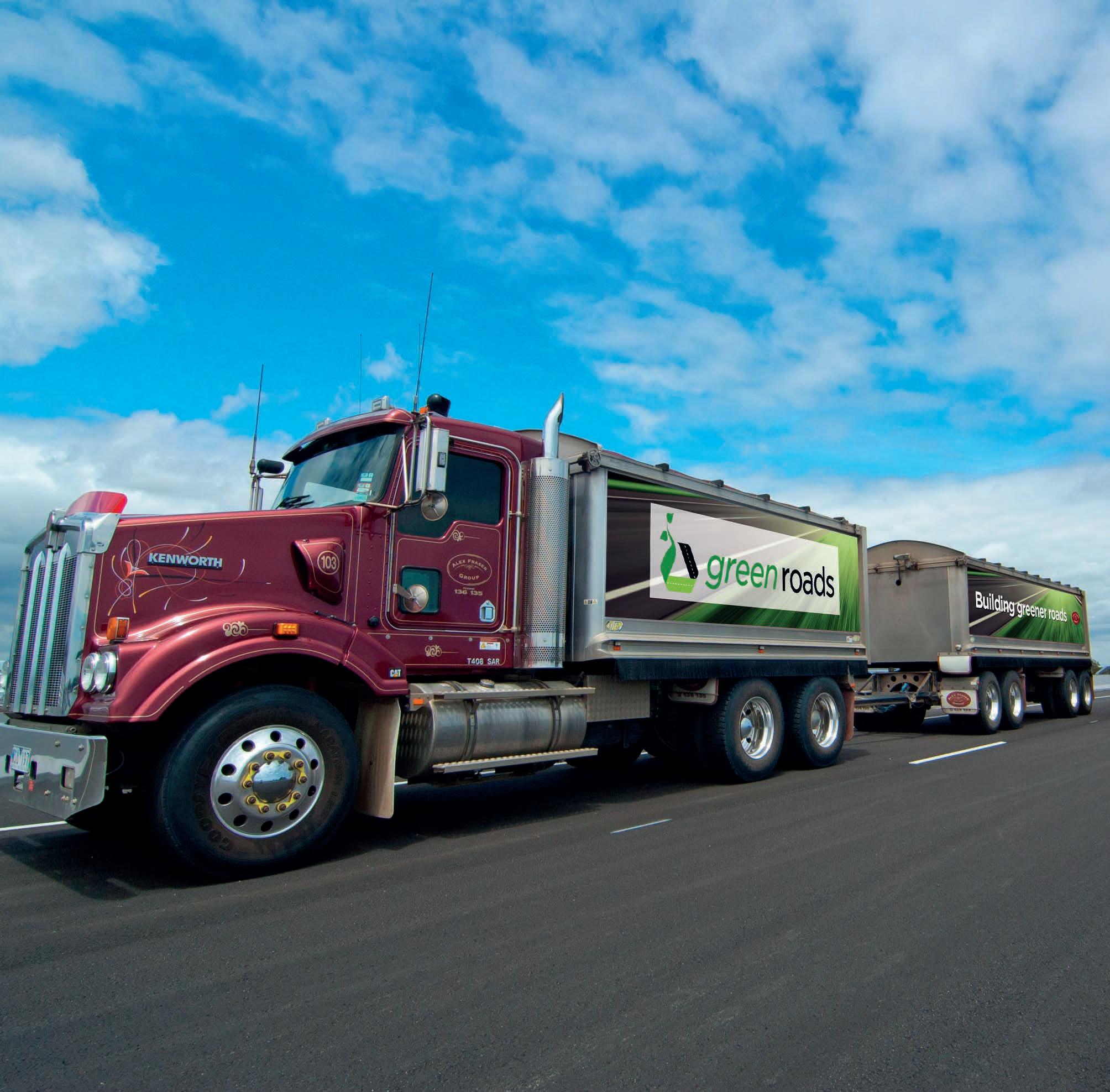










JEFF DOYLE, EXECUTIVE DIRECTOR ROADS – NATIONAL TRANSPORT RESEARCH ORGANISATION, DISCUSSES THE IMPORTANCE AND FUTURE OF INFRASTRUCTURE MEASUREMENT FOR AUSTRALIA’S ROAD, RAIL, PORTS AND AVIATION NETWORKS.
Akey aspect of infrastructure development is preparation, foreseeing the future needs of a society in order to have the time and resources to deliver a suitable solution.
Australia has steadily grown over the past decade, averaging 1.3 per cent population growth annually between 1992 and 2022 (Australian Institute of Health and Welfare).
Development of such infrastructure, enabling it to cater for Australia’s growing population, can only be successfully implemented by first understanding what the country requires.
On top of being the Executive Director for Roads, Jeff Doyle is also tasked with heading up the infrastructure
measurement component of the National Transport Research Organisation (NTRO).
He says infrastructure measurement has always been an essential aspect of infrastructure development and delivery, but recent developments in technology have increased its potential.
“I put in a strategic plan when I first joined the NTRO and a big focus of that was that ‘if you can’t measure it, you can’t manage it’,” Doyle says.
“Roads are the lifeblood and blood vessels of our economy. That’s why we use cutting-edge technology to compile asset and collection data. We look to monitor and measure, so our clients can better manage and maintain their assets.”
As the key body for planning,
operations and research across roads, rail, ports and airports, the NTRO strives to provide best practice solutions and knowledge across all modes of transport.
Infrastructure measurement and data collection makes up a portion of this holistic service, but as Doyle explains, the importance of data collection and measurement cannot be overstated.
“We provide that data, our clients can then use that information to make better economic, community, safety and maintenance decisions,” he says.
This data is provided to councils, road agencies, state and territory governments, ports, airports, road engineers, pavement designers and more. All with the end goal of providing valuable context to
inform decisions around their local transport networks.
The data itself comprises multiple facets and aspects, such as pavement strength testing, road construction testing, local road surveys, ride quality testing, road safety assessments, crack detection and mapping and automated pavement surface assessments to name a few.
“These data sets are there to tackle what I call a hattrick of main issues,” he says. “We’re doing great work in all three. It’s the quality and collection of the data, the timing of processing data and visualising/digitising that data.
“A lot of the future trends are pointing towards how we can collect and visualise this data quicker. Being able to collect, process and get that data in real time is what our clients are looking for. We’re growing in each of these areas and getting better and better and so is
the technology in this area. That’s where our different vehicles and technology such as iPAVE come in.”
Described by Doyle as an “engineering masterpiece”, the NTRO’s iPAVE (Intelligent Pavement Assessment Vehicle) technology is an “incredible” tool for infrastructure measurement.
Equipped with a range of data collection systems, iPAVE can assess both the structural and functional condition of the road, using laser technology to look at characteristics including roughness, surface texture, and rutting.
Cracking and other surface data is assessed using an automated 3D monitoring system, while cameras mounted to the truck’s exterior will give road maintenance experts a first-hand look at the state’s road network.
Thanks to an on-board groundpenetrating radar, the iPAVE can also
collect sub-surface data at the same time, giving experts a better understanding of what’s happening underneath the road surface.
These datasets are collected at the same time, in one trip, at highway speed.
Doyle says the NTRO currently has three iPAVE units, with a fourth on the way.
He adds that only 23 units are currently in operation globally.
The units have already made an impact, helping to assess network conditions in Victoria following flooding and extreme weather conditions in 2022. This included the assessment of 8400 kilometres of Victorian roads.
“The science is strongly telling us that we should expect more of these climatic events. As experts in this space, the NTRO is advocating for changes in standards and materials to enable a

 Jeff Doyle, NTRO Executive Director, Roads – NTRO.
Jeff Doyle, NTRO Executive Director, Roads – NTRO.


could extract the highest possible value from their recovery budget,” he says.
Doyle reiterates that data collection is great, but without the adequate technology and processes to understand and implement this data into action, data is less impactful. This is where the NTRO comes in.
“Transport networks produce massive amounts of data, but you’ve got to be careful that you’ve got the systems to be able to extract that data efficiently. It’s one thing to get the data, it’s another to have the right tools to get a visualisation that you can use to make decisions,” he says.
“There may be other ways of collecting data, but the way that we collect the data, we’ve got the equipment to make these data collections quicker, more efficient and a lot safer than other methods. It only affects their network for a short period of time.”
“TRANSPORT NETWORKS PRODUCE MASSIVE AMOUNTS OF DATA, BUT YOU’VE GOT TO BE CAREFUL THAT YOU’VE GOT THE SYSTEMS TO BE ABLE TO EXTRACT THAT DATA EFFICIENTLY. IT’S ONE THING TO GET THE DATA, IT’S ANOTHER TO HAVE THE RIGHT TOOLS TO GET A VISUALISATION THAT YOU CAN USE TO MAKE DECISIONS.”
quicker recovery when these events occur. Road asset managers and others know that they need to be on the front foot and more preventative. That’s where data is key,” Doyle says.
“Our clients are very understanding that they need to stay ahead of the game, or they risk getting caught behind after these climatic events. They need to gauge where things are and where they’re at in terms of their local transport networks.”
In the case of the 2022 Victorian floods, the NTRO was able to use data collected by its iPAVE vehicles to compare PCI (Pavement Conditioning Index) data across 2021, 2022 and 2023.
This found that close to 90 per cent of affected roads were classed as being in poor, or very poor condition.
“We were able to use previous data to be able to gauge exactly what was going on with the local road network – not only what was happening on the surface, but also importantly the sub-surface. Analysing this data gave them more than enough information to make the best maintenance decisions, ensuring that they
A unique strength of the NTRO is its ability to keep a firm focus on the current needs of the roads, rail, ports and airports sectors, while also keeping an eye on the future.
To this end, Doyle says the NTRO is always looking to implement improved technologies including Artificial Intelligence, as it looks to continue innovating for Australia’s transporting future.
“We’re constantly looking at different developments that are occurring across the globe. We believe that we’re punching above our weight here in Australia and New Zealand, but we’ve got to be constantly looking at what else is out there as well. Technology moves so quickly, so it’s important that we’ve got our eyes open,” Doyle says.
“In terms of what the future holds and what our clients are concerned with, it’s all about sustainability. That’s really the focus – renewable and sustainable solutions. That’s our focus as well, demanding much better environmental outcomes to what we’re seeing.”
Roads will continue to be a key part of NTRO’s future endeavours, as it pushes to support Australia’s transport future.
“To quote Ted Conover, roads remain the essential network of the nonvirtual world,” says Doyle. “They’re the infrastructure upon which almost all other infrastructure depends. They’re the paths of human endeavour.”
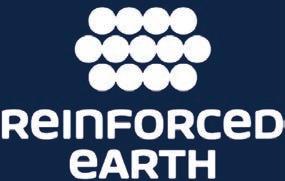
Celebrating 50 years in Australia, Reinforced Earth provides solutions for soil structure interaction to retain, cross, protect and strengthen.
Protect
Our protection systems mitigate the damage caused by natural disasters.


Strengthen
We design and supply materials for geosynthetic soil reinforcement for various applications, such as basal reinforcement and steepen slopes.


Cross
We deliver structures designed to cross obstacles, including bridge abutments, underpasses, tunnel extensions, cut & covers, culverts, arch bridges and wildlife crossings.
Retain
We tailor earth retaining solutions, from our own Mechanically Stablised Earth walls, to a wide range of other retaining structures.


THE FILL UP TODAY APP IS CHANGING THE LANDSCAPE BY CONNECTING COMPANIES WITH DRIVERS FOR MATERIAL IMPORTS AND EXPORTS. FOUNDER AND CREATOR JASON PATERSON EXPLAINS HOW HE TURNED HIS VISION INTO A REALITY.
ason Paterson’s journey to the civil construction industry is far from conventional. In many ways, it’s this journey that has been the biggest contributor in forging his innovative and entrepreneurial spirit.
“I started out in Gippsland and then as a motor mechanic, I moved up to Darwin. Then I moved into the civil construction industry in Queensland. I’ve always been fixing trucks or being around them,” he says.
“When I went out on my own and founded the PatAsh & Civil Group in 2004, it was glaring how many trucks were on site and how many had waiting times. That waiting time is very costly and it’s
happening right across the country. There are loose hours everywhere and civil construction companies are the ones that are paying for it.”
With more than 30 years of experience in the sector, Paterson has a thorough understanding of the industry’s current requirements, as well as its legacy issues. He says a lack of trackability was the catalyst for the original idea of an application that could streamline, simplify and monitor trucks on site.
“Without this trackability of anything, all you have to rely on is a paper trail. That’s all you’ve got. That’s all you can sign off on,” he says.
“Nowadays everything can be captured to the minute. It’s rare these days that things can’t be captured to the minute whether we’re talking about timesheets, tracking apps, geofences and those types of things.
“If we have a load of materials coming in, the driver might be there for 22 minutes, but it might be listed as 45 minutes.
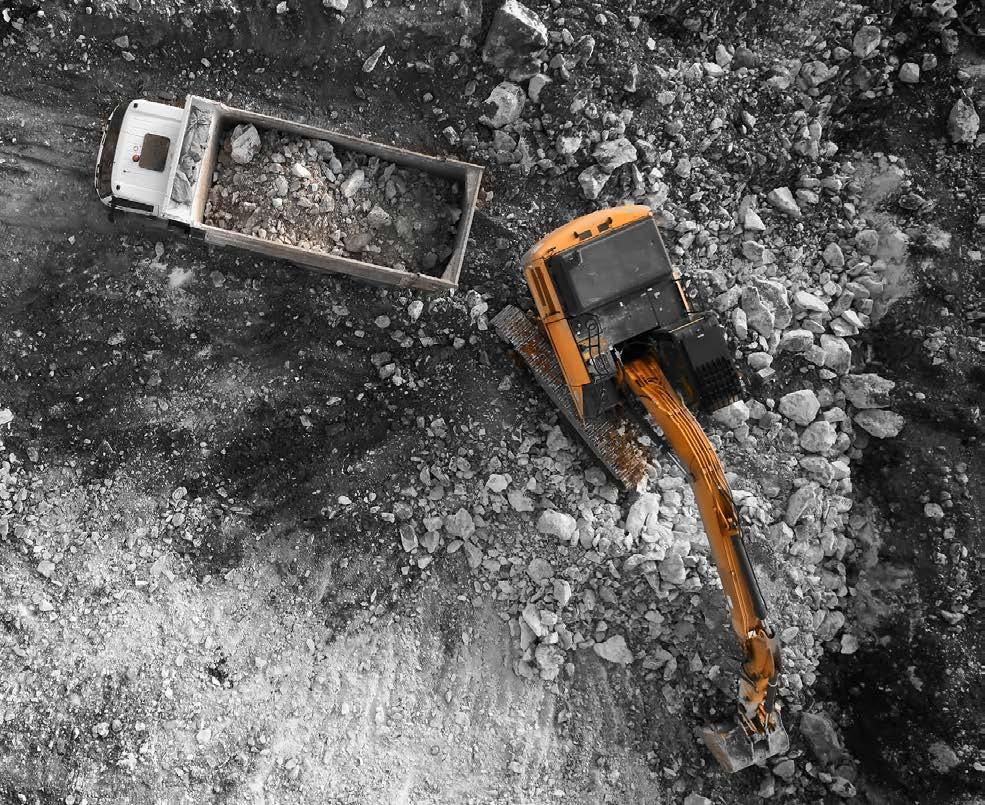
“WHETHER IT’S BIG COMPANIES, SMALL COMPANIES, EXPERIENCED DRIVERS, NEW DRIVERS, PEOPLE ALL GET THE SAME TREATMENT ON THIS APP.”
That was the idea behind the Fill Up Today app.”
The Fill Up Today app assigns jobs to drivers using the platform, from which they can view site specifics such as the requirements for importing and exporting site materials. Drivers can then use the app for inbuilt navigation, while the operations or fleet manager can track the driver’s progress in real time.
Data around site entry/exit, travel times, time spent on site, and more are captured through geofencing, helping to streamline







the invoicing process. This eliminates the continuous delays with paper dockets.
Paterson says increasing the efficiency of cash flow internally and externally is just one of the biggest benefits of the app.
“These types of things are on my mind all of the time, every day. Not every week, not every month, but every day – that there’s thousands of dollars going that’s not being recorded,” he says.
“With the Fill Up Today app, the trackers don’t lie. What it provides is honesty and the truth, the data and information are black and white.”
These features and more were developed in Australia, specifically for Australian industries. An aspect that Paterson takes great pride in.
“I wanted to build it onshore, which I’m very passionate about. The app was built in Geelong (Victoria) and born and bred in Australia,” he says.
“We’re proud of who we are and what we stand for. Everyone with a platform like this can have equal opportunities in an honest way. We’ve set this app up so that everyone is personally tested and verified, also to ensure that they have insurance. It’s very thorough.”
This onboarding process allows drivers of all types, makes and backgrounds to compete for different jobs on an even keel.
“Whether it’s big companies, small

companies, experienced drivers or new drivers, people all get the same treatment on this app. After all, why shouldn’t everyone have the same opportunities,” he says.
Paterson says he understands that there’re still people out there who prefer traditional, paper-based invoicing and processes.
From his experience, he says it’s important to keep an open mind and learn more about the potential benefits of the app.
“People don’t like change. I know, because I used to be one of those people,” Paterson says. “I totally agree with where they’re coming from, but I’d tell them to watch this space. That level of understanding and learning will increase.”
The Fill Up Today app team is forging its own opportunities, with upcoming events and industry discussions to provide a platform for further growth.
“I’d just say to people ‘have a go!’ We’ll be getting out there more and more, but we’re not going to push it down anybody’s throats. People will see it, recognise it, and start to talk about it. I’m looking forward to that organic growth for what is a simple system,” Paterson says.
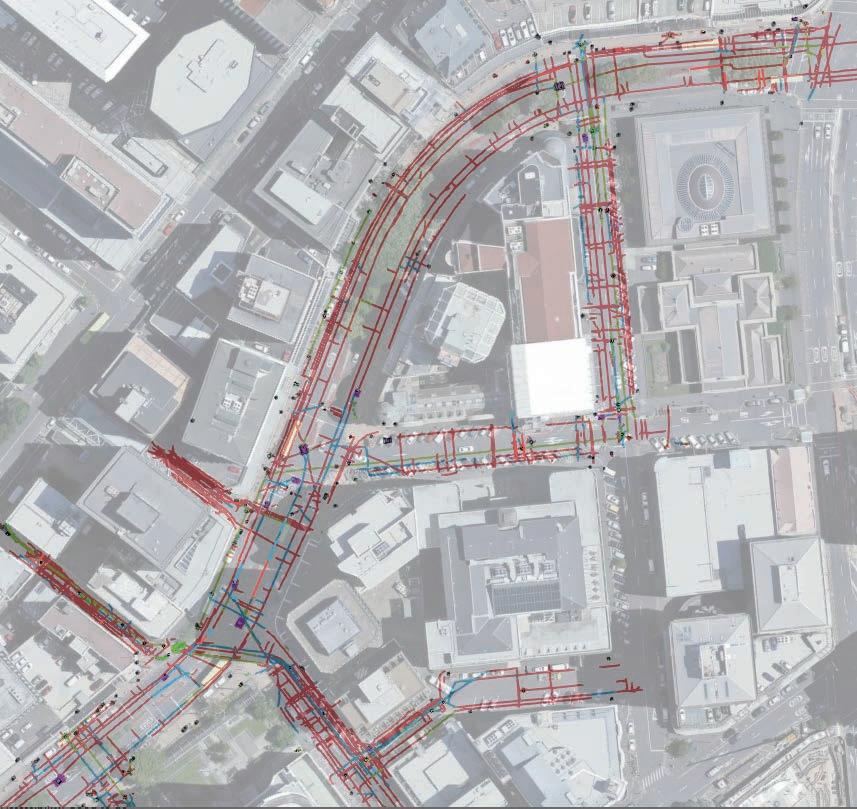
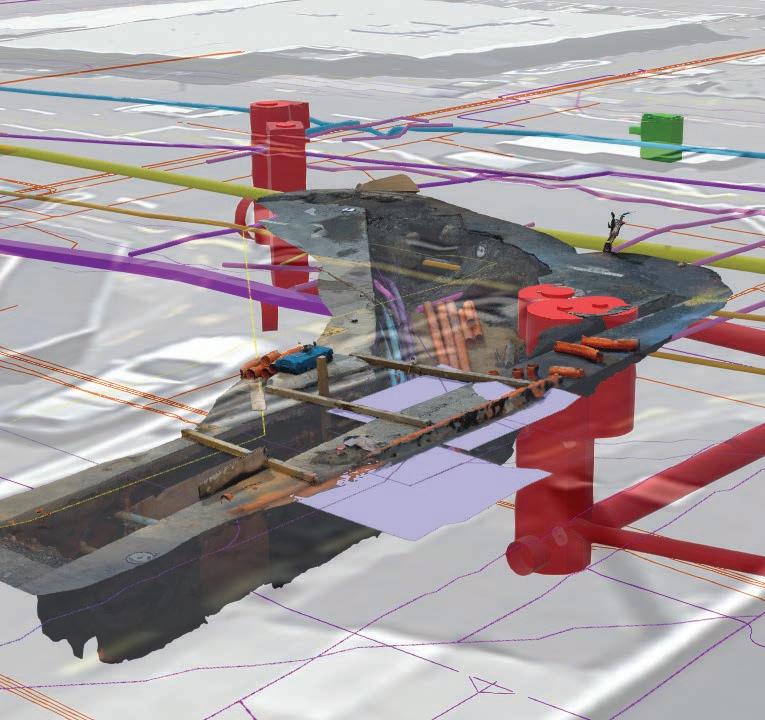
With Reveal, you can eliminate subsurface risks, deliver infrastructure projects faster and minimise cost blow-outs and variations.
If you need to understand your underground, get in touch with the world’s leading subsurface experts.
JOHN DEERE WAS AWARDED THE DIVERSITY COUNCIL AUSTRALIA’S INCLUSIVE EMPLOYER STATUS FOR 2023-24. ROADS & INFRASTRUCTURE MAGAZINE LEARNS MORE ABOUT THE COMPANY’S ETHOS AND PRINCIPLES, AS WELL AS WHAT WENT INTO ACHIEVING THE MILESTONE.
Diversity, equity, and inclusion are all essential components of healthy cultures within any company.
John Deere is one such company that exemplifies such qualities through numerous actions.
It believes that by strengthening the diversity of its workforce, John Deere can give everyone their chance to leap forward. It’s why the company celebrates diversity, champions equity, and promotes inclusiveness so every employee can make the greatest impact as their true self. Its efforts have been honoured for multiple years as an open and inclusive employer of choice.
Now the Diversity Council Australia (DCA) has awarded John Deere Australia and New Zealand Inclusive Employer Status for 2023-24, recognising the company’s commitment to diversity and inclusion.
DCA announced the 82 employers to earn a place on the list, with John Deere being one of only six employers to receive the title three times, having previously been recognised in 2021-22 and 2022-23.
To make the list, participants must prove their commitment to diversity and inclusion by having employees complete an in-depth survey. This helps map the state of inclusion in their respective workplace and produce results that exceed national benchmarks on key measures.
John Deere commenced its Diversity, Equity and Inclusion (DEI) journey in Australia & New Zealand in 2019.
It focused on leadership education and established a DEI Council primarily comprised of its Executive Leadership
Team. Leaders were taken on the journey to understand what DEI is and its business case. The Executive Team recognised that without leadership buy-in and alignment, DEI would continue to be another ‘HR initiative’ focusing on compliance and programs rather than becoming an integrated part of its DNA.
The education and programs developed by John Deere followed the Deloitte Diversity and Inclusion Model. It recognised that leaders need to take the business on a journey and adjust as the company matures in this space. John Deere recommends this approach to
other organisations and would retake the same approach if it were starting out.
John Deere Australia and New Zealand Managing Director Luke Chandler says achieving Inclusive Employer Status for the third year in a row was a proud moment.
“Each year, this assessment has provided us with valuable insight on where to focus our efforts to ensure we offer an inclusive workplace for everyone,” he says. “An inclusive workplace is not the result of the actions of one, but the actions of many.”
As Head of People and Culture at John Deere Australia and New Zealand, Camilla Kelly has led the company’s Diversity, Equity and Inclusion (DEI) journey. She recognised the importance of taking the time and effort to truly understand DEI.
“DEI is multi-layered, requiring time, dedication, and a holistic approach to fully understand its complexities,” Kelly says. “It can challenge deeply held beliefs and raise difficult questions. It’s not about checkboxes or quotas. It’s interwoven in everything we do and everything we want to be.
“We have taken the time and energy to expand knowledge across the company –not just talk. Our policies, talent selection


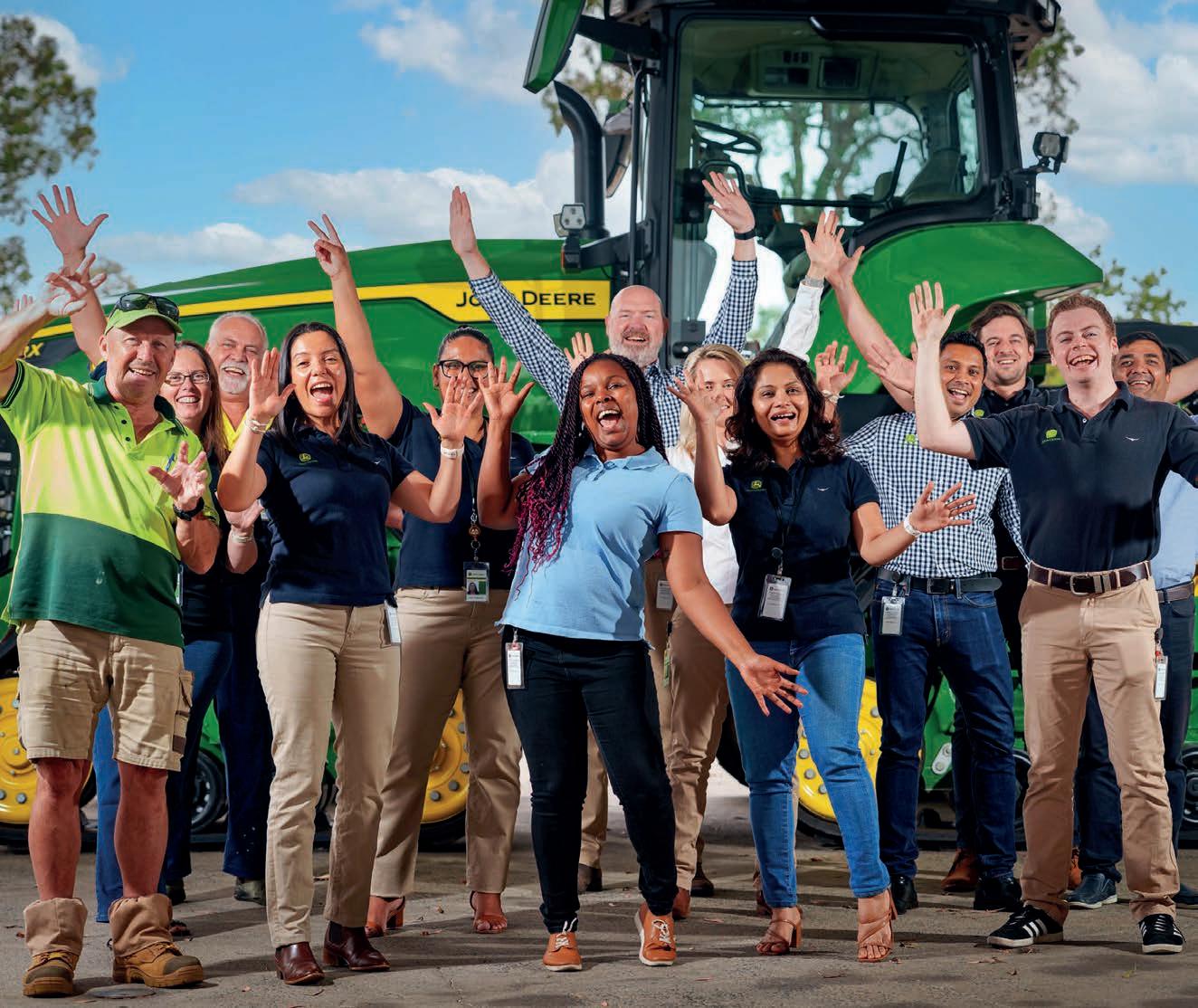

“IF YOUR CORPORATE VALUES ARE ROOTED IN DIVERSITY AND INCLUSION, THAT EXTENDS TO YOUR ABILITY TO RECRUIT THE BEST PEOPLE, ULTIMATELY ELEVATING YOUR WHOLE BUSINESS. I THINK THERE’S ALSO A HALO EFFECT WHERE A COMPANY IS A GOOD CORPORATE CITIZEN.”
criteria and workplace practices have been updated, including introducing industryleading gender-neutral parental leave.
“We’ve also worked on developing leadership capabilities and implementing DEI frameworks that empower everyone to lead initiatives that move the needle on DEI.”
John Deere’s Australia Aftermarket team recently led such an initiative, holding an event at the Brisbane office to celebrate World Inclusion Day. Staff were encouraged to share their personal stories and food from their cultural backgrounds. It was also an opportunity to discuss their perspectives on inclusion.
Aftermarket Marketing and Communications Specialist Laura PozniakElphick is one such John Deere team member who took part in the World Inclusion Day event.
“Inclusion is all about creating a work environment where everyone feels respected,” Pozniak-Elphick says. “You should feel like you can bring your true self to work every day, and John Deere really embraces that.
“While your colleagues always try to be their most professional selves, it’s important to remember they are individuals with families and lives outside work. Someone could be smiling on the outside but struggling on the inside, so we need to be mindful of each other and be
as kind and inclusive as possible.
“If your corporate values are rooted in diversity and inclusion, that extends to your ability to recruit the best people, ultimately elevating your whole business. I think there’s also a halo effect where a company is a good corporate citizen. They’re more likely to offer their products and services in the best possible way,” she says.
With innovation as one of John Deere’s key values, Kelly says diversity and inclusion are paramount to the company’s success.
“As a smart industrial company, we need both diverse talent and an inclusive culture to develop this competitive advantage,” she says.







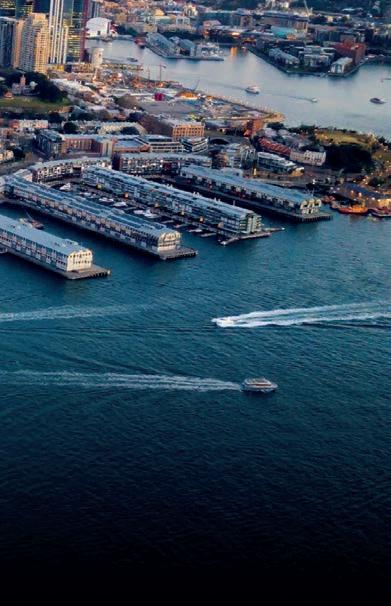

RECENT WORKS BY SAMI BITUMEN TECHNOLOGIES HAVE EVALUATED THE USE OF ITS SAMIFLOAT HIGH-FLOAT EMULSION IN A HIGH-VOLUME SETTING FOR THE FIRST TIME. SAMI AND COLAS REPRESENTATIVES DELVE INTO HOW THE PRODUCT EXCEEDED EXPECTATIONS.
SAMI Bitumen Technologies is always pushing the envelope and never resting on its past successes when it comes to product development.
This ethos results in each of its products being put through their paces during development, with multiple trials and tests evaluating any possible potential improvements.
The company’s SAMIfloat spray sealing solution had already proven to be a more than effective alternative to conventional spray seals, following initial trials. So how do you build upon a product that has already proven to be effective? You push it even further.
SAMIfloat is a cationic high-float emulsion product, which creates a gel-like structure within the binder. This structure helps to create greater adhesion within the aggregate and prevent emulsion run-off and bleeding.

This design allows SAMIfloat to be a more durable and better performing option for road sprayed seals, in part due to the product containing a thicker film. This prevents aggregate stripping, while also making it more resistant to oxidisation from exposure to the atmosphere.
Despite these impressive chemical properties and performance characteristics – and despite undergoing multiple internal trials – the product required to be proved on a project of significant volume. That is until a recent project at Glenn Innes.
Situated in the New England region of New South Wales, Glenn Innes had already been the site of an initial trial for SAMIfloat, where 8000 litres of the product was applied over 12 months ago.
After the successful trial of using SAMIfloat in a graded seal project for the Glen Innes Council in September 2022, Colas NSW placed an order for 300 tonnes of SAMIfloat to be used in the construction of approximately 140,000 square meters of graded seal in the
Deepwater area of Glen Innes. The product was manufactured at both SAMI Camellia and Pinkenba production facilities.
As Andrew Carter-Meggat, Operations Manager – COLAS explains, Glenn Innes once again presented the ideal circumstances for further evaluation of SAMIfloat. This time, on a much larger scale.
“When we first trialled SAMIfloat 12 months ago, it performed quite well and some of the characteristics of the product were better than anticipated. For our most recent project, we would be required to apply more than 300,000 litres of product over the course of seven days,” he says.
To complete the project, SAMI Bitumen Technologies produced the product one-totwo days in advance at its sites in Pinkenba, Brisbane and Camellia, Sydney.
Requirements from the Glenn Innes council increased the complexity of this project compared to the initial 8000 litre trial, as Carter-Meggat adds.
“When speaking with them, they had a few constraints around their works program. The purpose of the project was to
basically seal their local road network. The council nominated two roads within their network, which came to a total of around 17 kilometres,” he says.
“We thought that SAMIfloat would be the best option for them in terms of delivery, since they wanted to deliver this project in the summer.”
There were still some unknowns around the product, such as how it would perform in differing conditions in such a large volume, as well as logistical factors such as manufacture and delivery.
“We had to work through some of our own constraints and come together as a team. We weren’t sure how the product was going to go in such a large volume. I mean, we only sprayed 8000 litres in the trials,” CarterMeggat says.
“So those were some of the concerns that we had about the product, on top of the weather conditions.”
Phil Stevens, QLD State Manager – SAMI Bitumen Technologies, says both his company and COLAS worked closely to find solutions for these “unknowns”.

were saved and not released into the environment in this project.”
Lee Whitehead, State Manager, NSW –COLAS, says sustainable alternatives such as SAMIfloat are the best way forward for the sector.
“To tackle climate change and biodiversity loss, COLAS is committed to a strategy based on a low carbon and biodiversity roadmap. The Group is implementing actions to reduce the carbon intensity of its direct emissions and is developing and promoting low carbon techniques and solutions,” he says.
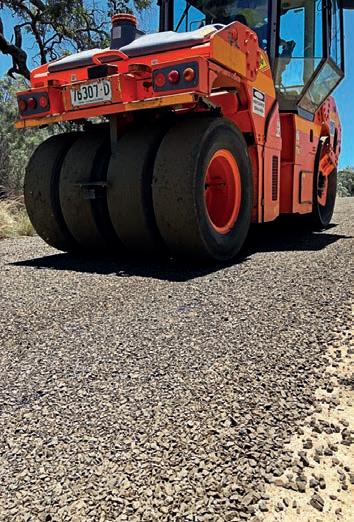
everyone in the team,” he says.
“We had some weather come in and we received 25 millimetres of rain in one downpour. We thought that the product would re-emulsify. It didn’t, it stayed intact, which we were very surprised about.”
Feedback has highlighted the effectiveness of the product, as well as the satisfaction of the council in terms of the product’s performance.
“As a player in sustainable development, the Group takes into account the life cycle management of infrastructure, from its design to its recycling, in order to reduce its impact. With innovative solutions that add new functionalities to roads, COLAS is helping to build the infrastructure of the future to serve local communities.”
Carter-Meggat says that the performance characteristics of SAMIfloat will also help to increase the versatility of the spray sealing industry in Australia.


“In terms of the manufacturing side, we were initially concerned that the product may be difficult and slow to produce. SAMIfloat does contain ingredients which can be sensitive and tricky to manage, however we gained confidence in our ability to make this product quickly and at a high quality at the plant,” he says.
“The feedback from Colas NSW was very positive at site, and it appears the seal has performed as intended. This product is unique compared to similar products we produce for these types of projects, due to the way it holds up when sprayed and how it eliminated some of the issues normally encountered with other binders.”
Carter-Meggat says the larger project provided valuable experience for both himself and the rest of the team.
“With a new product like this, there’s always some surprises and learnings. Our team were a little unsure with how it was going to perform, how to place it, and what the differences were between this product and others they’ve used in the past. It was a big learning curve for
“The Glenn Innes Council has been very happy with it, and I believe surrounding councils are able to have a look at the end result, which has impressed them as well. I believe the success of this project will open new doors for other councils and their road network and infrastructure programs,” he says.
“It’ll assist these councils to seal their unsealed roads efficiently and sustainably. While it’s not carbon neutral, the carbon emission of total application is significantly lower than usual practices. SAMIfloat will take off more and more, once more councils are able to see how it actually works and how it’s performing over the next 12 months.”
The sustainability of SAMIfloat is a result of reducing the amount of heating required when compared to hot cutback binders, making it more environmentally friendly.
Spraying the binder at 70-80°C instead of 180-190°C, saved energy and costs, reducing safety and health risks, and providing environmental benefits. Eliminating the use of cutter in the binder can reduce costs and the risk of fire and explosion, also offering environmental benefits.
“Omitting the use of cutter can also reduce the risk of flushing and tenderness in hot seasons. The residual binder, resembling a multigrade binder, has a high enough penetration value to resist cracking in low temperatures, and its softening point is high enough (due to polymer) to prevent flow or flushing in high temperatures,” Hamidreza Sahebzamani, Technical Services Manager says. “Approximately 50,000 litres of kerosene
“By utilising this product, we can extend our window for sealing. Traditionally, sealing in winter could be done, but it can be quite risky. As this product is a cold product, you can spray it in the winter and your risk factors are significantly less. It helps to increase our productivity for our teams, as well as the end client,” he says. “Now that we can have that extended window, we can build more relationships with more clients and provide certain packages for more local councils.”
Despite the high slope of the road, there was no runoff, no aggregate pick-up, no pin-holing, and the adhesion of the binder to aggregate was excellent. The road was also opened to traffic immediately after the compaction was completed. The project commenced on 11/12/2023 and was finished a week later. Stevens says the success of the project has elevated SAMIfloat as a premier option for quick, efficient spray seals, where longevity is also required.
“I attended the site to observe the works and how the binder was behaving,” he says. “It was apparent how important the SAMIfloat binder characteristics were in order for COLAS to achieve their productivity goal and ensure the seal would hold up as designed for the client,” he says.
“This is another product we can now proudly place in our catalogue with proven performance and can provide SAMI and COLAS a competitive advantage in the market.”


















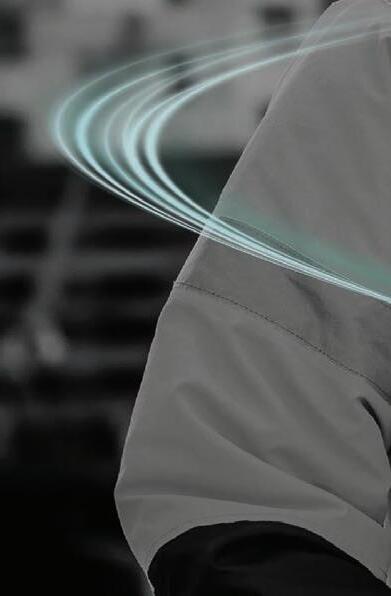




WOMEN IN INDUSTRY NOMINATIONS ARE NOW OPEN.
Now is your chance to nominate an industry leader who you believe is advocating for positive change and deserves to be recognised.
PROUDLY PRESENTED BY
MHD
Thurs 20 June, 2024
The Women in Industry Awards recognise outstanding women leaders from across Australia’s industrials sector.

ASTEC INDUSTRIES’ ROADTEC SB-3000 SHUTTLE BUGGY IS BEING USED AS PART OF RECENT WORKS ON THE WESTERN SYDNEY AIRPORT. ROADS & INFRASTRUCTURE MAGAZINE HEARS FROM ASTEC AND PREFERRED PROJECT PROPONENT BORAL ON WHAT MAKES THIS ITERATION SO SPECIAL.
According to the Parliament of New South Wales, Western Sydney represented Australia’s third largest economy while also housing close to half of Sydney’s total population in 2015.
This region of Western Sydney has experienced exponential growth over the past decade.
As a result, the demand for flights in Sydney is also expected to double over the next two decades.
This forecasted growth necessitated improvements and expansion to the region’s current aviation and transport infrastructure – a key factor in the development of the new Western Sydney Airport.
The Western Sydney Airport will deliver services for around five million people annually when complete in 2026, with this number expected to reach 10 million passengers by around 2031.
Construction materials company Boral was selected as the supply partner responsible for producing, delivering, and laying the asphalt for the runways, taxiways, and airside roads and pavements at Western
Sydney International (Nancy-Bird Walton) Airport (WSI), in conjunction with the CPB Contractors and ACCIONA Joint Venture.
Andrew de Villiers, Senior Projects Manager, Asphalt (NSW/ACT) – Boral, says the works on the Western Sydney Airport resulted in coordination being a major requirement.
“The project has been running for quite some time. There’s a lot of different components that had to be brought together to deliver the whole package. We did a lot of design review early on with the client which helped to finalise what was going to be built, based on previous experience,” he says.
To deliver on so many moving parts, Boral utilised multiple internal divisions to complete these works.
“We then had to mobilise an asphalt plant, which was from Astec. We shipped that plant to site in about March 2023,” he says. “Then April through to August we delivered a fully integrated solution. Boral Logistics helped to move all the components to site. De Martin and Gasparini, which is a Boral division, did the concrete footings.
Our Boral Asphalt Asset and Maintenance team oversaw the contractors putting the plant together.”
Machinery and equipment also played an essential role in what is a highly scrutinised project.
“With a project like this, there’s a huge amount of publicity as it’s a very highly visible project. It’s getting a lot of airtime and rightfully so,” de Villiers says. “It’s a huge infrastructure project that fits a gap that’s been sitting in Australia’s infrastructure for decades. So now that it’s here, everyone wants to make sure it’s going well.”
“A key [machinery] requirement for us was reliability. We needed gear that would work as intended, day in and day out.”
Boral has long used Astec equipment and machinery as part of its works Australia-wide. Previous experience, particularly in Perth, with Astec’s Roadtec SB-3000 Shuttle Buggy, indicated the machine could be an ideal fit for the Western Sydney Airport Project.
Jorge Boil, Business Line Manager,

company’s history
and robust equipment, as well as the track record of that equipment on major infrastructure projects, placed it in the box seat for the Western Sydney Airport Project.
“When this project came along, one of the reasons why they came to Astec was the reliability. They needed a strong and dependable machine for such an important job as this one,” he says.
With increased capacity within the hopper/ conveyors, Astec’s Roadtec SB-3000 Shuttle Buggy is capable of storing more than 30 tonnes once fully laden.
That storage capacity, combined with ‘Four Wheel Steering’, including crab steering, ensures operators can complete mediumto large-scale projects, while retaining the manoeuvrability of a smaller machine.
The SB-3000’s dual hydraulically-controlled platform stations also deliver a range of safety benefits, such as a clear line of sight to the sides, back and front hopper of the machine and nearby personnel working on-site.
Similar to much of Astec’s range, the SB3000 is also the beneficiary of the Stage Five,
Over the years, Astec has sought to constantly improve on its Shuttle Buggy concept, taking in feedback from designers as well as operators across the sector.
Industry insight highlighted potential improvements to operator comfort and accessibility for both maintenance and operation.
Fine tuning the overall balance of the machine was also a key focus during the development and following improvements to the SB-3000.
“We had some feedback that previous iterations felt a little ‘top heavy’ as it was a taller and slimmer design. That’s why we went with a wider and lower profile design. The tyres, for example, are designed to be thicker and wider. This, along with the lower profile, helps to increase the balance and the visibility,” Boil says.
“The other thing that customers noted was that to maintain previous machines you needed to reach the top of the machine. That’s the reason Astec decided to put major components at ground level, so it’s much easier to carry out the required
A GENERATIONAL IMPACT
Astec’s RP195 Asphalt Paver, as well as its Mobile Asphalt Plant, are just some of the other pieces of Astec machinery being used on the project at present.
Astec’s equipment, along with Boral’s expertise, are helping to deliver a project that de Villiers says will benefit the wider region for decades to come.
“Being a part of such a significant infrastructure project is really a once in a lifetime opportunity. You can build new runways, you can build runway re-sheets. Very rarely do you build an entirely new metropolitan airport,” he says.
“It’s great to be a part of something like this. We are also using a lot of people who live in Western Sydney. Lots of our crews are based locally so it’s a real matter of pride for them as well. To be a part of such an enthusiastic and highly skilled team has been a real privilege”.
Jorge Boil agrees.
“Western Sydney Airport is one of the most important infrastructure projects in the country and we’re proud that Astec equipment is helping to deliver it,” he says.
AGRICULTURE FARMING EDUCATION WASTE MANAGEMENT RESOURCEMANAGEMENT
CONSERVATION MANUFACTURING RESOURCES
ENERGY HEALTH & SAFETY INFRASTRUCTURE ENGINEERING MINING CONSTRUCTION
QUARRYING AGRICULTURE FARMING EDUCATION
WASTEMANAGEMENT RESOURCEMANAGEMENT
CONSERVATION MANUFACTURING RESOURCES
ENERGY HEALTH & SAFETY INFRASTRUCTURE ENGINEERING MINING CONSTRUCTION
QUARRYING AGRICULTURE FARMING EDUCATION
WASTEMANAGEMENT RESOURCEMANAGEMENT
CONSERVATION MANUFACTURING RESOURCES
ENERGY HEALTH & SAFETY INFRASTRUCTURE ENGINEERING MINING CONSTRUCTION
QUARRYING AGRICULTURE FARMING EDUCATION









WASTEMANAGEMENT RESOURCEMANAGEMENT MANAGEMENT

SEARCH FOR TOP INDUSTRY TALENT THROUGH OUR JOBS BOARD.
CONNECT WITH ALIGNED CANDIDATES.
BOOST YOUR CHANCES OF FINDING SKILLED APPLICANTS.
SCAN TO CREATE AN ACCOUNT TODAY AND DISCOVER YOUR PERFECT MATCH!


ATLAS CEA HAS BEEN CRITICAL TO THE DEVELOPMENT OF ROAD INFRASTRUCTURE PROJECTS ACROSS AUSTRALIA. IT’S BEEN LIGHTING THE WAY FOR 24/7 PROJECT MANAGEMENT.
When providing lighting towers for operating at any time of the day or night, Atlas Copco has long been a trusted brand within the industry. Adding to its already established HiLight range, which represents efficient temporary lighting for improved productivity, Atlas CEA will soon offer the all-new HiLight BI+ 4 lighting tower.
The HiLight range offers Infrastructure Managers a wide variety of choices so that the right lighting tower can be selected for any infrastructure application. Atlas CEA, the distributor of Atlas Copco lighting towers within Australia, supplies machines to a range of industries with a flexible and dynamic approach to operations, addressing efficiency and safety on site. Project Managers can also be assured of the robust build quality and compact size for which the Atlas Copco brand is globally recognised.
”Atlas Copco products have long been known for their strength and build quality.
The site conditions across Australia can be diverse and demanding. It’s critical our products can withstand these conditions to support our local customer needs,” says Atlas CEA Brand Leader David Buttigieg.
Atlas Copco has really put its innovation stamp on LED (light-emitting diode) technology. The lenses in these HiLight LED light towers have a unique optic designed specifically for the toughest and most demanding conditions.
This innovative, fully directional LED lens design ensures maximum light coverage and reduces lighting waste. A single HiLight tower can cover an area of up to 6000 square metres with an average brightness of 20 lux (the standard unit for light level intensity). Such coverage guarantees a brighter, safer, and more productive site.
“With the ability to light such a large area, the HiLight range is both efficient and practical,” says Buttigieg. “With safety a high priority for us and our customer base, we are confident the range ensures sites are safe without limiting the opportunity to be as productive as possible.”
The HiLight range provides businesses with a complete portfolio of innovative

and easy-to-use light towers for energyefficient light coverage that will help boost operational productivity while meeting environmental and safety standards. Of particular note is the newly arriving HiLight BI+ 4.
This innovative light tower incorporates state-of-the-art surface mount device (SMD) LED lighting technology and lithiumion batteries for excellent performance and efficiency. It will enable businesses to reduce their carbon footprint and operating costs while improving sustainability levels.
“Atlas Copco has placed a great deal of focus on creating a range that is efficient, environmentally conscious and delivers a cost-effective solution for its customers,“ says Buttigieg.
The new HiLight BI+ 4 light tower offers users maximum flexibility. With four different operating modes, the HiLight BI+ 4 combines lithium-ion batteries with a low-consumption Stage V diesel engine. It can be powered directly from mains electricity, from its lithium-ion batteries, from its diesel engine, or from a hybrid setting to make the most of the energy available.
Running solely on batteries provides project managers with up to 19 hours of silent and emission-free operations. In hybrid mode, it offers the lowest average fuel consumption in its class, with 0.29 litres per hour. Thanks to the incorporation of a battery, businesses can reduce their carbon footprint by up to seven tonnes of CO2 per unit per year.
“With the capacity to run for an

worksites stay well-lit with energyefficient luminosity, night after night,” Buttigieg says.
With a 60 per cent reduction in engine runtime, service intervals are three times longer than light towers that run solely on diesel. The HiLight BI+ 4 requires minimal maintenance every 1500 hours of lighting so that users can save on costs associated with servicing.
The HiLight BI+ 4 has four floodlights providing 150W power to reliably cover

4000 square metres. With a fully hydraulic mast lifting and electric mast rotation, it is 15 per cent lighter than any other hybrid light tower, and you can fit up to 22 units on a standard 13-metre container truck.
Atlas CEA is one of the leading companies when it comes to supplying durable machinery. The LED HiLight BI+ 4 tower is just another example of the company’s innovation in this space.
“The transformative LED technology embedded in the BI+4 Lighting Tower combines innovative design and ecofriendly illumination. From heightened visibility to reduced environmental impact, this lighting solution brightens worksites and supports a greener and more sustainable future,” says Buttigieg.
The high Colour Rendering Index (CRI) of more than 85 out of 100 means it does an excellent job of revealing the true colours of objects compared to natural light. The directional optics of the range further enhance this, as they offer incredible light distribution. That’s consistent, evenly distributed, glare-free light across the entire area at an economical cost.




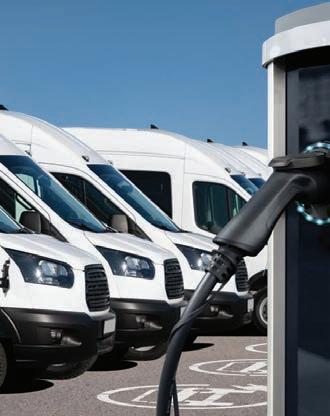













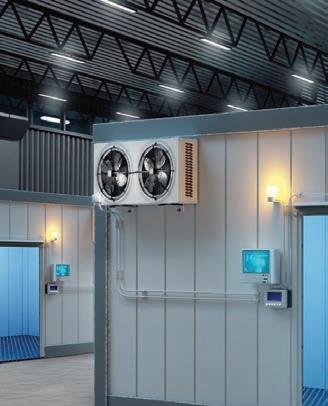




ROADS & INFRASTRUCTURE MAGAZINE SPEAKS WITH MUNICIPAL WORKS AUSTRALIA CEO PETER ALI TO LEARN MORE ABOUT THE ASSOCIATION, AS WELL AS HOW IT CONTINUES TO PROVIDE FOR THE MUNICIPAL WORKS SECTOR.
Even before Peter Ali became the Municipal Works Australia (MWA) Chief Executive Officer, he had an invested interest in what he calls an essential sector.
“I was an Operations Manager and had been involved in the association. I’d been on the conference organising committee for around seven years and was on the board for a short period of time before I put my hand up for the role,” he says.
“It’s fantastic to be working for an association that’s truly giving back to the industry and helping people to further develop their professional development and career progression. We could see that there were some areas that were underrepresented in terms of support, which is where we’re standing in.”
Established in 1936, MWA fosters excellence in providing municipal works and services by facilitating professional growth, fostering camaraderie, and organising networking events and career development programs. Its members include people providing frontline maintenance, engineering, and operational
support services for councils.
MWA is the preeminent national collaborative platform for local government employees and companies supplying products and services within the municipal works sector. It’s also a not-for-profit, member-based association established to uphold and assist individuals and organisations operating in the sector.
Ali says he can see first hand the positive impact that the association has made on those new and old throughout the sector.
“To be in a position where you can influence and support those in the industry who may need assistance is very rewarding and a real privilege,” he said. “The MWA is going through a really great growth phase at the moment. We’re offering services and programs that we’ve never offered before.”
Some of these include new leadership training and development courses. These aim to directly influence growth within each of its members.

“The feedback for these programs has been just fantastic. I think people have really appreciated that there’s something there for
that knowledge,” Ali says.
“We’re also shortly launching our new online training program for people in local government, so they can have easy access to
build up their own skill sets. Both of these programs are looking really exciting.”
Ali adds that these programs are centred on creating cooperation and communication not only between members, but also for the betterment of other sectors, such as the roads and construction industries.
“It’s part of our commitment to creating face-to-face interactions with our members. We’ve introduced these field days, which are rolling programs where our corporate members can partner with a council to demonstrate their services and practices with councils in that area,” he says.
“It enables people to discuss and learn about new things that are happening within the municipal works space and demonstrate and interact with each other to network and learn. These programs have been really well attended.”
Ali says on top of the development of training and leadership programs designed specifically for those in the industry, another key achievement of the MWA in recent times has been its ability to unite nationally.
“We’re now really well positioned as a national body and I’m proud of the coordination that was required to make that happen. All of our stakeholders had the best intentions, and the result has been great,” he says. “We’ve now got a cohesive board and efficient management structures. Being able to see many of our projects and programs



come into place has been really rewarding.”
A key representation of this is the MWA’s upcoming 30th National Municipal Works and Engineering Conference.
The conference brings together individuals and companies working in the municipal works sector from around Australia together in Bendigo, Victoria.
This year’s conference features high-profile speakers, engineering and maintenance work experts, exhibitors, giveaways, and a networking event over two days. It features demonstrations and presentations of new
product and service solutions, we well as presentations from the next generation of leaders in municipal works.
“It’s a place where we can all get together in one place and meet nationally. There’s going to be speaking programs, technical programs, informative programs. It’s got everything. It’s a very diverse event and you get to see all this and more in just one spot,” Ali says.
“The reason for the big focus on the next generation is because we and the industry are forward looking to what the future holds for the sector and the people within it. This covers things such as technology, but also our younger industry members – how they’re shaping up in the works space, how they’re progressing, and also what they’re hoping for the future.”
Ali himself says he’s “extremely optimistic and excited” for the sectors future, as well as the continued growth of the organisation.
“The association is on a major growth path, and we’ll soon be getting larger in terms of our membership. That’s great because it’ll allow us to provide more back into the industry. The bigger we are, the more that we can provide,” he says.
“We’ll be looking to face challenges head on so we can continue to best support our members while they negotiate any changes in the sector.”
And for those that aren’t already members, Ali says the first steps are simple.



“We have a free membership option and it’s great to be involved in the sector in which you work. All you have to do is visit our website and learn more. You’ve got nothing to lose,” he says.








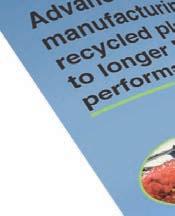


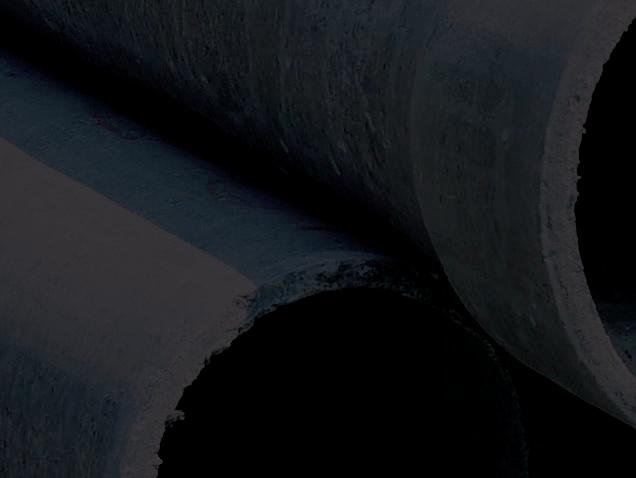











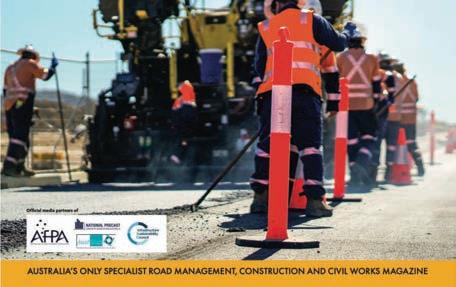

























AfPA’s key ask of the Federal Government, and all other levels of government across Australia, is to fix our roads first.
AfPA strongly urges the Federal Government and all levels of government to urgently prioritise addressing the lack of resilience through reversing the maintenance backlog on of Australian roads. This urgent need has been identified and highlighted in a number of recent Federal, state and independent investigations.
As the vital lifeline between communities, our roads act as the arteries that connect us to healthcare, critical supplies and much more – roads are of the highest level of strategic importance for all communities, in particular remote regions. It is fundamental to the safety of our road users, our connectivity and national economic productivity to ensure our roads are safe and reliable. It is noted that our regional and remote communities continue to be disproportionately affected by roads of poor condition and reliability.
In November 2022, research conducted by the Grattan Institute highlighted the urgent need for Australia to commit an annual funding of an additional $1 billion to sustain its current road infrastructure. This was further reinforced by the recommendations released in December 2023 by the Federal inquiry into the implications of severe weather events on the national regional, rural, and remote road network.
The recently released Federal Government’s Infrastructure Policy Statement and its decision to revert to a 50:50 shared investment agreement between states and the Federal Government is likely to impose strains and burdens on states and territories – which may further affect their ability to maintain our roads, without additional funding.
Despite these changes, AfPA acknowledges and commends the Federal Government’s ongoing infrastructure investment and its recent commitment to significantly boost
funding for the Roads to Recovery Program
– doubling investment from $500 million to $1 billion over the next few years. AfPA also welcomes the Government’s latest commitment of more than $4 billion over the next decade to repair damaged roads, particularly in regional Australia. These changes by the Federal Government show a good start to maintaining our most valuable asset, our roads and most importantly seeking to improve the safety of our roads. AfPA welcomes the opportunity to work with the Federal Government to develop a strategy and program in which to ensure our road network is safe, sustainable and connects us all.
AfPA seeks the Federal Government to require the full use of established national endorsed guides and technology to achieve a significant contribution to reduced Scope One and Two emissions over the next few years. AfPA members have set a target to reduce Scope One and Two emissions by 30 per cent by 2030.
AfPA seeks support from the Federal Government on the mandated use of these products across the sector on Federally funded projects to overcome barriers to adoption, for materials and practices already endorsed by Austroads and all State and Territory jurisdictions.
Government has set a stretched target of 43 per cent reduction of greenhouse gases by 2030 from 2005 levels and while this is a stretched target the decarbonisation journey has already been well commenced by industry.
Our national road surfacing companies already have their own international targets to demonstrate and are willing to work with government to do their part.
By funding the reversal of our national road maintenance backlogs and addressing the national road resilience crisis, there is a significant benefit to reduced carbon emissions from the transport and roads sector.
It should also be recognised that currently there is low lying fruit through under utilised nationally endorsed specifications
“AFPA HAS ENCOURAGED PROCUREMENT AGENCIES AND RELEVANT INDUSTRY BODIES TO ADOPT THE SF4P AND REGISTER TO BEGIN SETTING QUANTIFIABLE METRICS AND BENCHMARKS FOR THE REDUCTION OF NEGATIVE ENVIRONMENTAL IMPACTS ASSOCIATED WITH ASPHALT PRODUCTION AND OPERATIONS AS PART OF THEIR NORMAL TENDERING PROCESSES.”
AfPA is already well progressed in supporting circular economy practices and making our contribution to government’s commitment to reduce greenhouse gases by 43 per cent by 2030 (on 2005 levels).
AfPA in partnership with Austroads has established a number of pavement engineering practices that incorporate the use of renewable materials that provide engineering benefit to roads. These include re-use of asphaltic materials (in perpetuity), crumb rubber (tyre waste), plastics and glass.
and technical guides that are already jointly developed between industry and ITSOC (through Austroads) that will help with this journey now – however are not fully utilised or implemented nationally.
AfPA recommends that government enforces the use of established road surfacing engineering guidelines that significantly reduce carbon emissions by reducing asphalt temperature to warm mix (a 30-degree reduction in asphalt temperatures reduces greenhouse gases by 15 per cent);


eliminate petroleum based cutters and hydrated lime anti-stripping agent (reduction of 10-15 per cent emissions).
Government continues to support industry in utilising renewable materials that have sound engineering properties that benefit and improve road performance to help address a growing national circular economy challenge.
AfPA, earlier this year, launched its Sustainability Framework for Pavement (SF4P), ready to accept registrations for assessment. The framework is set to enable road authorities and stakeholders to achieve best practice standards, meet key sustainable procurement metrics and encourage a more sustainable, flexible pavements industry.
The sustainability framework has been developed through extensive consultation with industry and is based on circular economy concepts, including Life Cycle Assessment (LCA) approaches. It encourages stakeholders to consider the UN Sustainability Development Goals (SDGs) and recognises the industry’s role in Australia’s waste reduction and energy efficiency requirements.
AfPA has encouraged procurement agencies and relevant industry bodies to
adopt the SF4P and register to begin setting quantifiable metrics and benchmarks for the reduction of negative environmental impacts associated with asphalt production and operations as part of their normal tendering processes.
This implementation will not only ensure best practice sustainability standards and metrics embedded into procurement, but will also recognise the industry’s role in helping to reduce waste and contribute toward Australia’s emissions reduction targets.
AfPA urges procurement agencies and relevant industry bodies in the Federal Government to adopt the SF4P and register for assessments. Doing so will initiate the establishment of quantifiable metrics and benchmarks within the tendering processes, specifically targeting the reduction of negative environmental impacts associated with asphalt production and operations.
AfPA encourages procurement agencies to adopt the SF4P to set quantifiable metrics and benchmarks for the reduction in environmental impacts associated with asphalt production and operations as part of their normal tendering processes.
By integrating this framework into normal procurement procedures, the Federal Government can not only ensure the adoption of best practice sustainability
standards and metrics but also acknowledge and address the industry’s vital role in reducing waste and contributing to Australia’s emissions reduction targets. This proactive implementation aligns with the broader national and international sustainability goals, positioning Australia as a leader in environmentally conscious infrastructure development.
The Framework for Asphalt Production has demonstrated that it is possible to assist procurers of asphalt solutions to select from organisations demonstrating sustainable production processes, leading to reductions in energy use and greenhouse gas emissions and maximising the use of RAP (Recycled Asphalt Pavement) and other secondary materials.
It is envisaged that in adopting the framework, procurement agencies will be able to uniformly and transparently evaluate and select from suppliers who demonstrate a willingness to invest in their infrastructure and technology to deliver these services more efficiently and to reward where more sustainable options exist, such as incorporation of suitable ‘waste’ products within accepted solutions.
The Australian road toll at +1250 deaths (year to date) is clearly unacceptable and in
part there is an opportunity to address this through creating a safer roads environment. In addition there is an opportunity when undertaking these capital works to address the resilience of the road network in particular across regional Australia.
Australia has a vast road network with almost 873,573 kilometres, with the annual economic cost of road crashes estimated at more than $30 billion (as per Monash University), with over 50 per cent of killed and serious injury (KSI) accidents occurring on regional roads.
Australian research has shown that on these roads by increasing sealed shoulder widths and also providing a wide centre line treatment there is up to 50 per cent reduction in KSI’s. This provides an opportunity for the Federal Government to build low cost, mass action safer roads for regional Australia.
AfPA recommends further investment with State and Territories for a joint regional roads widening program across Australia.
AfPA in collaboration with industry and supported by State Government has developed the Australian Flexible Pavement Industry Skills Card (Skills Card).
This is a key initiative to attract new entrants to the flexible pavement industry
and support the reputation and recognise the workforce,
Bituminous surfacing industry is a specialist trade skill set that ensures the safety of the travelling public and protects the nation’s and the Federal Government’s most valuable asset – its roads.
On this basis, those who deliver the nation’s highest order roads should possess qualifications specific to this industry to ensure quality, safety, long-term durability, performance, and workforce sustainability, identifying career pathways through industry.
These skill sets have been designed to be transferable between employers and state boundaries and are recognised nationally.
The qualification needs to be recognised as a trade equivalent that provides confidence to procurers and promotes attraction and retention of talent to the industry.
This can only happen if authorities implement the skills card into the procurement process.
As the nation’s leading industry association for bituminous surfacing, AfPA has been compiling a significant library of industry specific resources that create a VET unit of competency, to be utilised by affiliated RTOs.
These resources will be retained and shared through the association to ensure the latest practical knowledge training is provided to the Flexible Pavements Industry.
The Skills Card, which is transferrable, recognises prior experience and the academies of each organisation.
In partnership with State Road Authorities, this scheme will identify, train, and provide each worker with a qualification on a skill set basis.
The following skills sets within the industry card have been developed to date: Safely handle bituminous materials; Asphalt Surfacing; Spray Sealing; Insitu Stabilisation Operations, and more.
The skills of Australian roadworkers were formally recognised thanks to a new qualification developed by AfPA and approved by the National Skills Commission.
The new 11-part qualification industry skills card will support better career development for workers and attract more people into a sector that is facing a skills shortage at a time of unprecedented demand from infrastructure projects and repairs to roads damage.
Under the new Skills Card, Australia’s roads are set to become safer and more skilfully built than ever through a set of specially designed part qualifications introduced under the national qualification RII30920 Certificate III in Civil Construction – Bituminous Surfacing, designed to improve the nation’s workforce and road building skills.






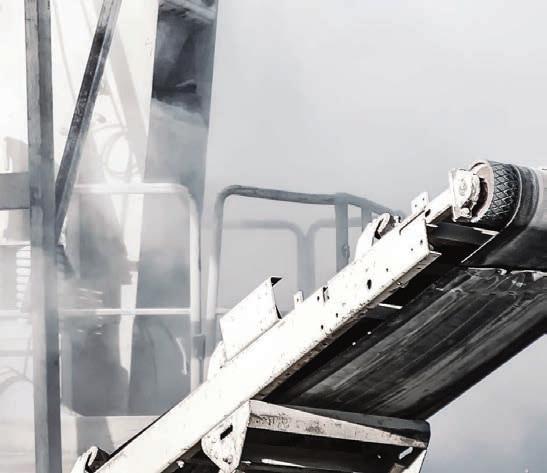


PROVIDES
Preferred proponent named for $225M Reid Highway interchanges
NRW Contracting has been named as the preferred proponent for the design and construction of two new interchanges on the Reid Highway in Western Australia. The project will see two free-flowing interchanges constructed to replace the signalised intersections at Altone Road and Drumpellier Drive/Daviot Road. The new interchanges will improve safety, traffic flow and increase the efficiency and reliability of freight movement. As part of the project, Reid Highway will be modified to pass over Altone Road, while a new bridge will be constructed to allow Drumpellier Drive/ Daviot Road to pass over Reid Highway. Access ramps and roundabouts will also be constructed to maintain connectivity to and from the highway. Construction is on track to begin in the first half of 2024 and is scheduled for completion in early 2026.
Construction, design partners appointed for Paradise Dam wall

CPB Contractors, Georgiou and GHD will support Sunwater’s delivery of the new Paradise Dam in Queensland. Earlier this month, the Queensland Government announced that Sunwater would begin planning for a new Paradise Dam wall on the Burnett River, which aims to provide a safe and secure water supply for the Bundaberg region. Sunwater has appointed CPB Contractors and Georgiou as the construction partners for the project. GHD will be the ongoing design partner for the project. Sunwater initially commenced the Paradise Dam Improvement Project Detailed Business Case (Stage Two) in December 2021, during which testing discovered three issues relating to the existing dam. This comprised of swelling clay, cement leaching and carbonation. Sunwater will begin planning

to build an entirely new wall at Paradise Dam following expert recommendations that the existing wall cannot be repaired or reinforced, a recommendation that it communicated to the Queensland Government. Along with its construction and design partners, Sunwater is now developing a detailed business case for a new Paradise Dam wall. Project costs and timeframes will be confirmed as a result of this process.
EOI now open for NEL State Tolling Corporation package
The North East Link (NEL) State Tolling Corporation (STC) has begun procurement for the NEL Roadside Systems Package in Victoria. Expressions of interest are being welcomed for the Roadside Systems Package (RSS Package), which includes the design, supply, installation, testing, commissioning, and support of the roadside tolling system for STC. The Toll Collection Capability will be delivered through two packages. The first is the RSS Package mentioned above, comprising the RSS Works and the RSS Support & Maintenance Works. The second package will include Back Office Systems package (BOS Package), comprising the BOS Works and the BOS Operations & Maintenance Works, with procurement of this package set to begin at a later date. Companies with experience and qualifications in the road tolling industry (supply and services) are invited to submit their interest.
Symal Infrastructure Pty Ltd, WSP Australia Pty Ltd and Arcadis Australia Pacific Pty Ltd – has been appointed to deliver the first part of the $5.7 billion overhaul of the Eastern Freeway from Burke to Tram Road. AMA – made up of Acciona Construction Australia Pty Ltd, AECOM Australia Pty Ltd, and MACA Civil Pty Ltd – will deliver the $3.8 billion M80 Ring Road Upgrade. The Eastern Freeway overhaul will see more than 45 kilometres of new lanes and new traffic management systems along the freeway to deliver 11-minute travel time savings between Springvale Road and Hoddle Street, 10 kilometres of walking and cycling paths and a rebuilt Koonung Creek Reserve. This will also include new noise walls. Works on the M80 Ring Road Upgrade will add nearly 15 kilometres of new lanes from Plenty Road to the new North East Link, a more efficient interchange at Grimshaw Street and new walking and cycling links.

$9.5B of works awarded for North East Link project
The Victorian Government has awarded contracts for works on the North East Link project, which includes the two largest freeway overhauls in the State’s history. Nexus – made up of Laing O’Rourke Australia Construction Pty Ltd,
EOI open for new Spring Creek Bridge tender
The New South Wales Government is seeking qualified contractors to tender for works to build the new Spring Creek Bridge. The new bridge will replace Spring Creek Bridge on the Kamilaroi Highway near Narrabri, aiming to improve the safety of motorists who use the bridge to travel between Narrabri and Wee Waa in the state’s north-west. The new Spring Creek Bridge will deliver a new, wider bridge that meets modern design standards along with current and future road network requirements. The existing bridge has been in poor condition and has been subject to heavy vehicles restrictions while essential safety work has been carried out to stabilise the structure. Works are expected to get underway later in the year after the successful tenderer is selected and the contract awarded.






